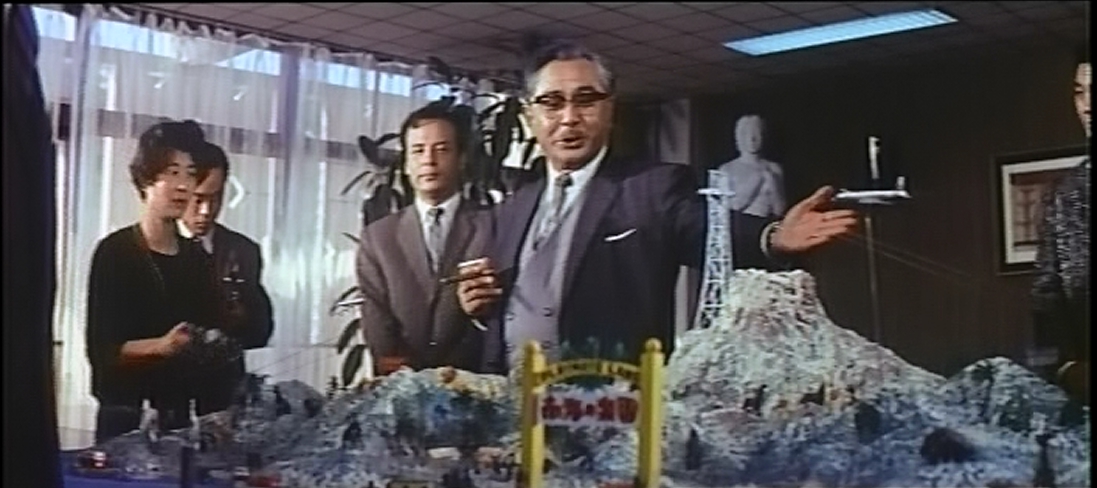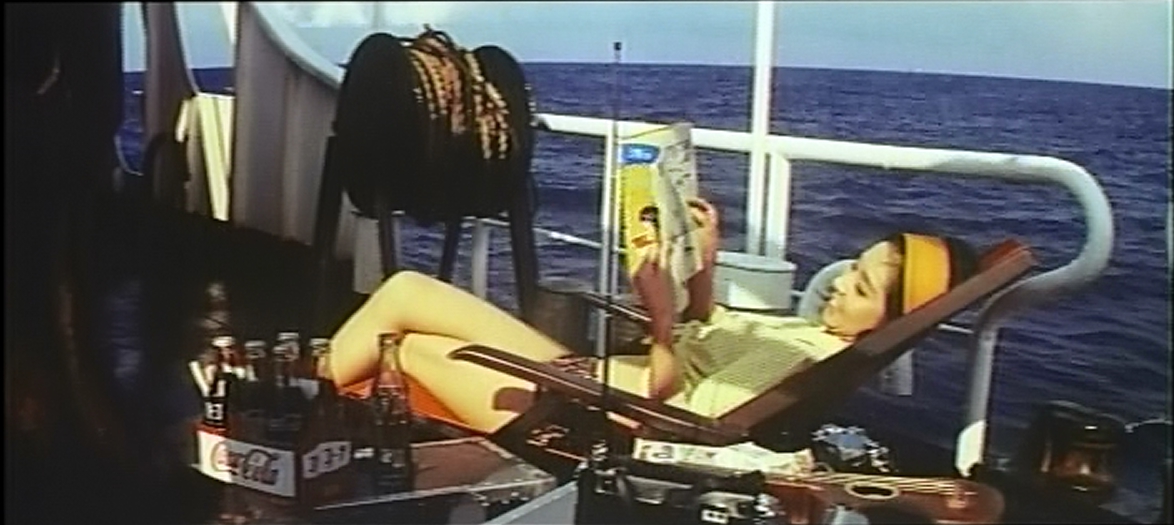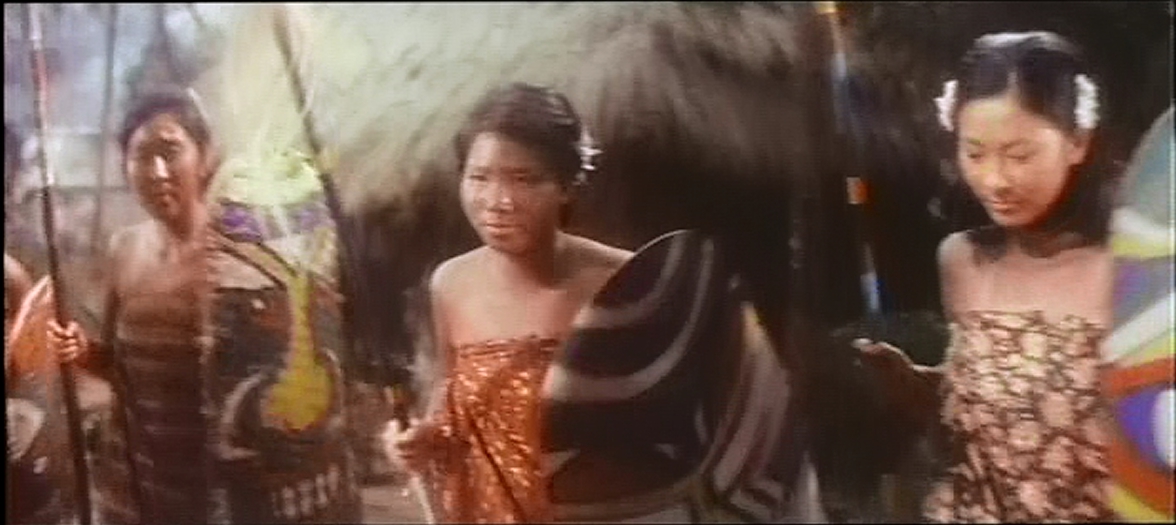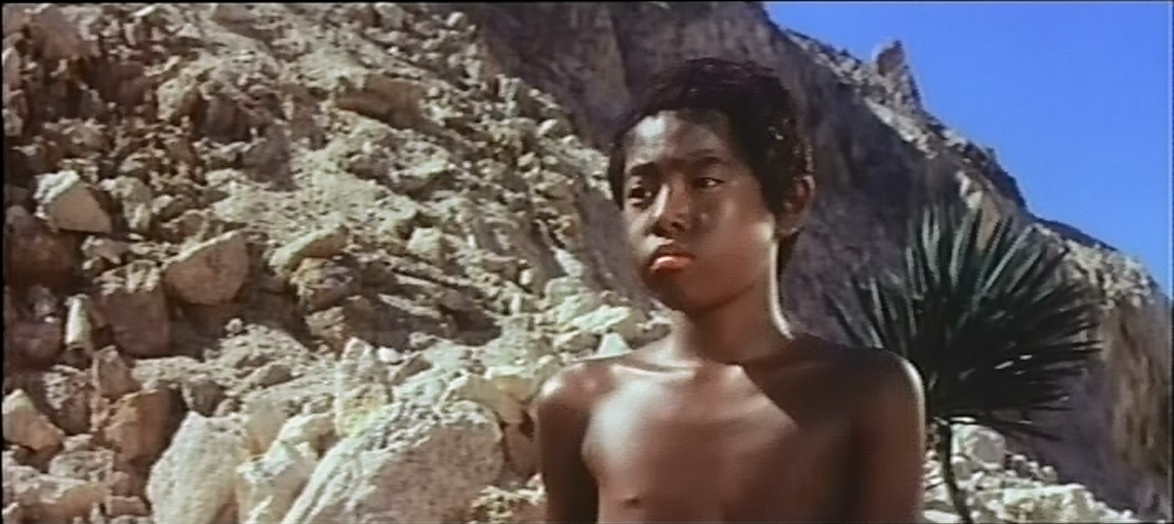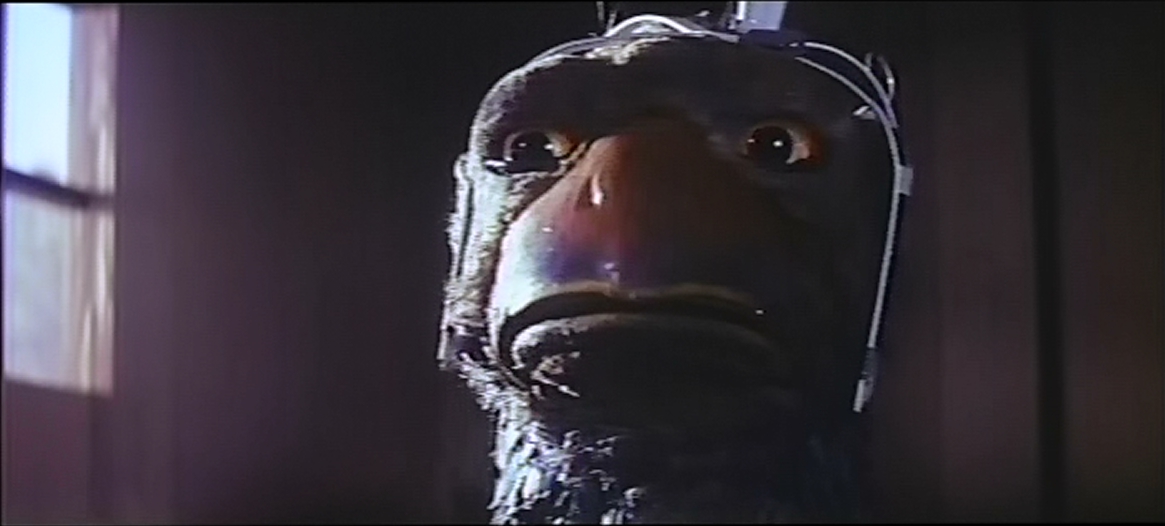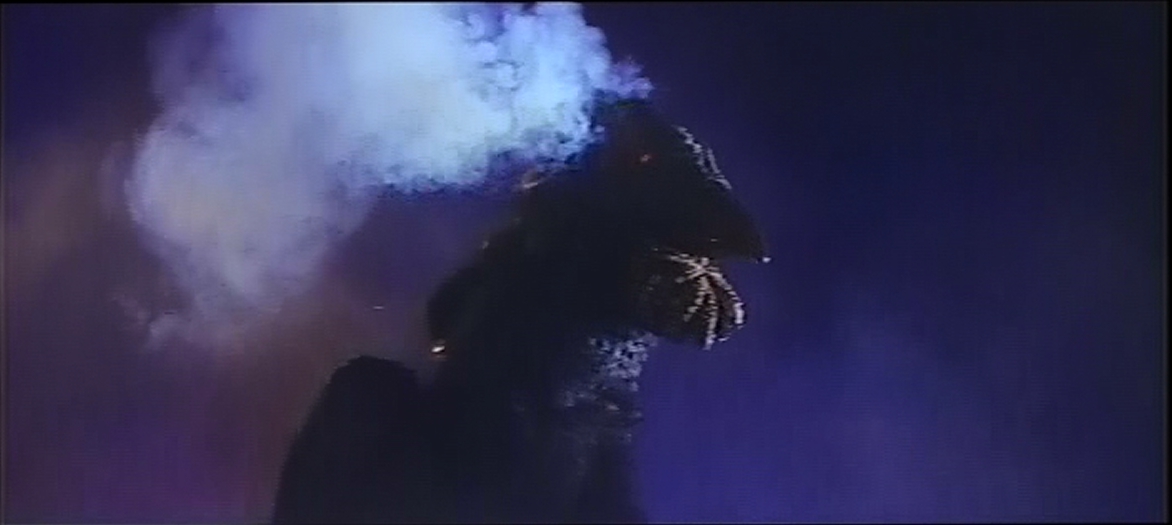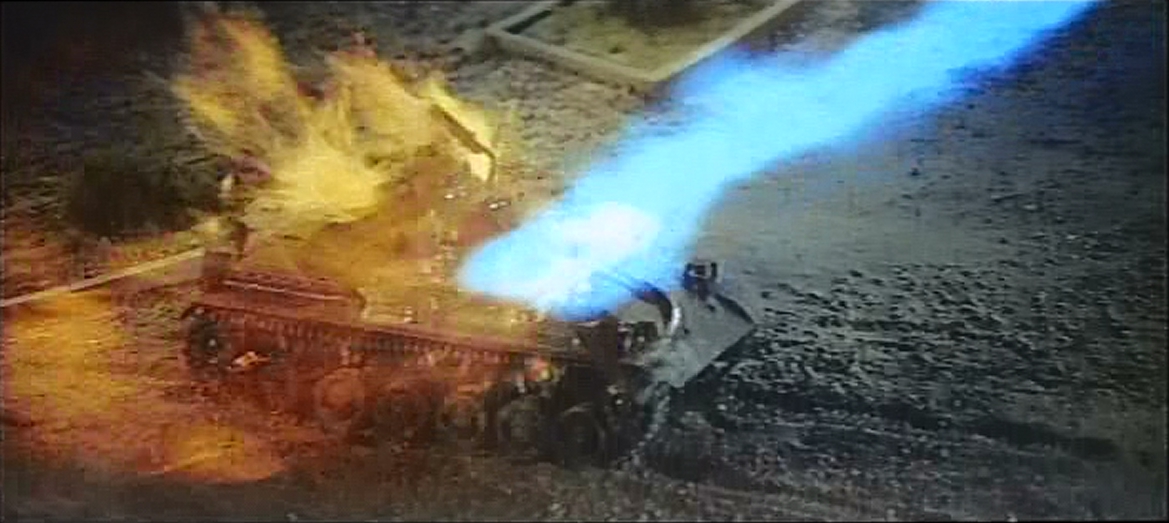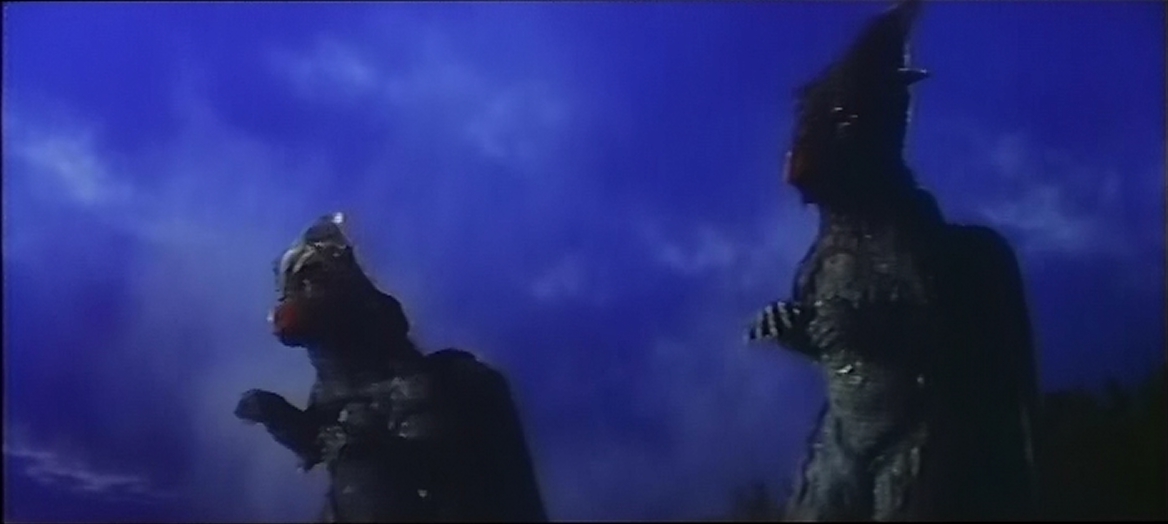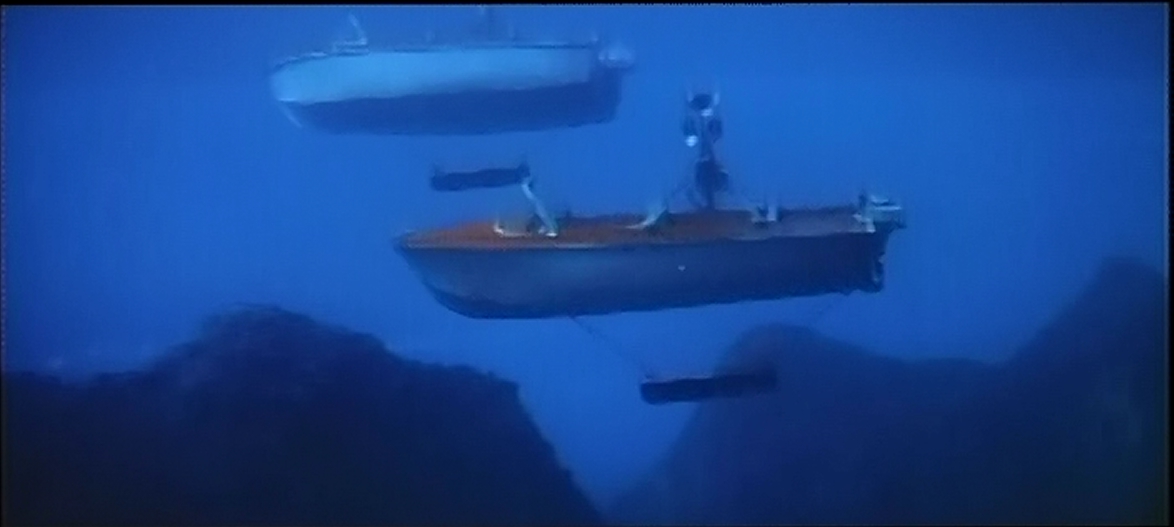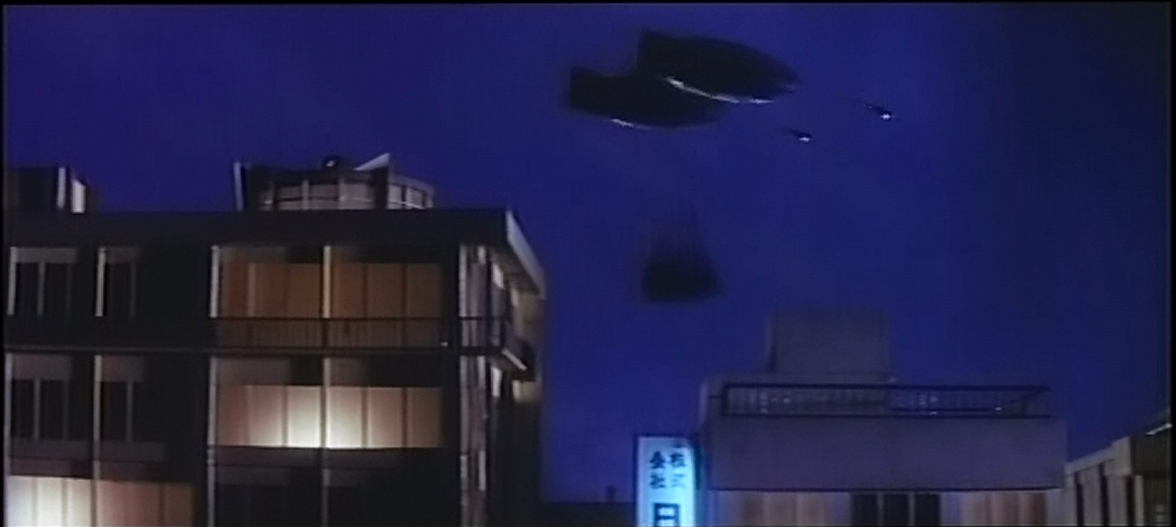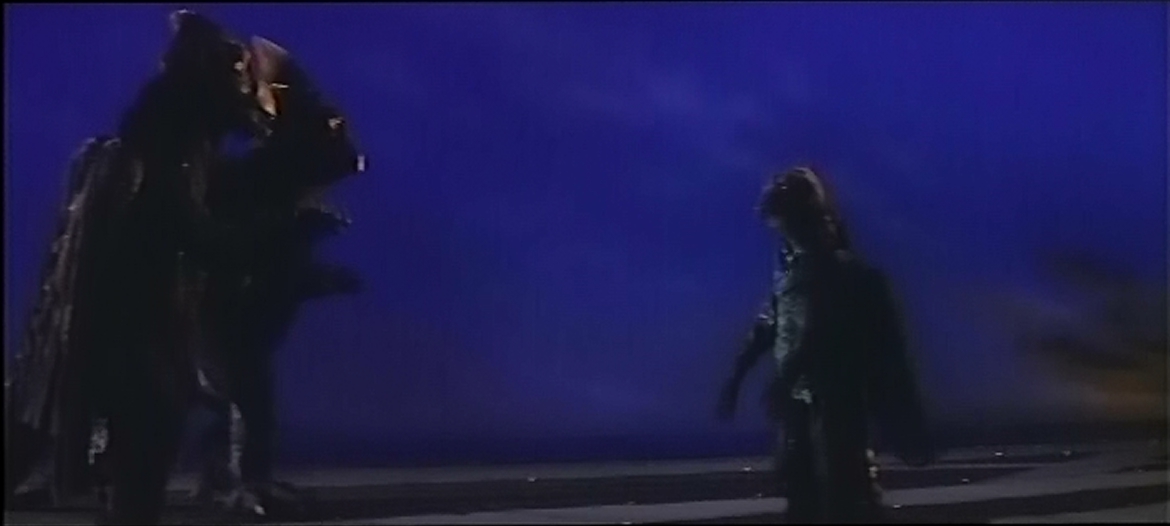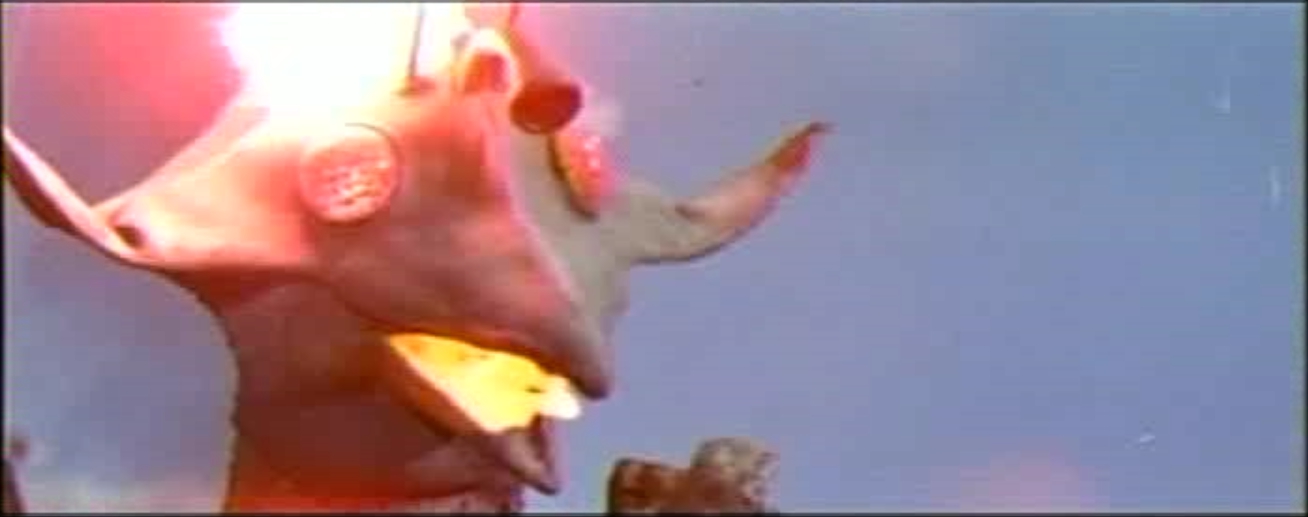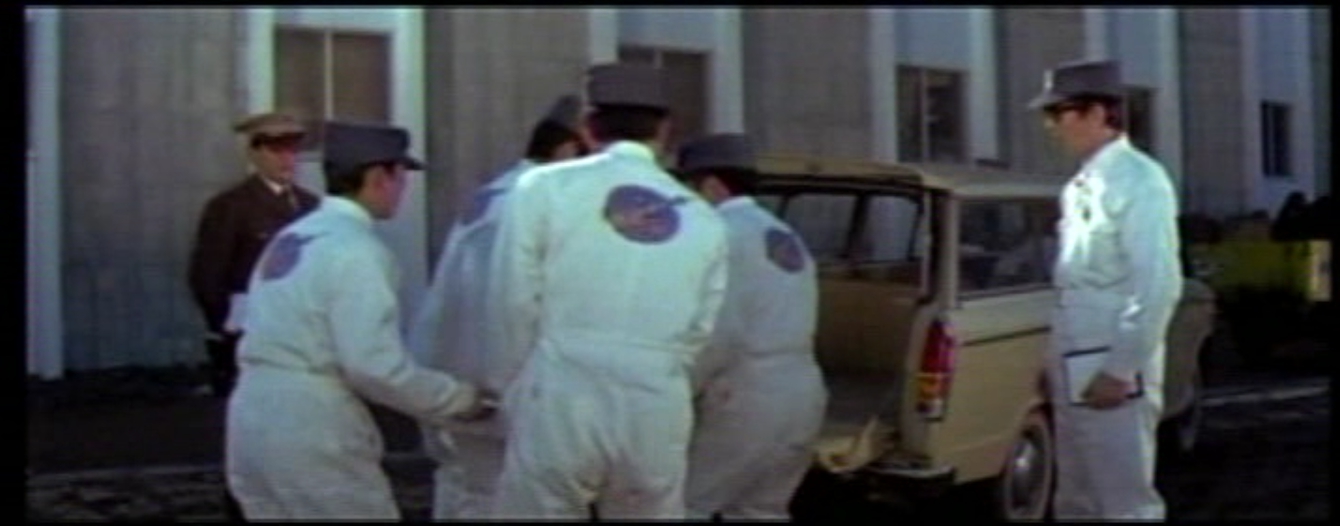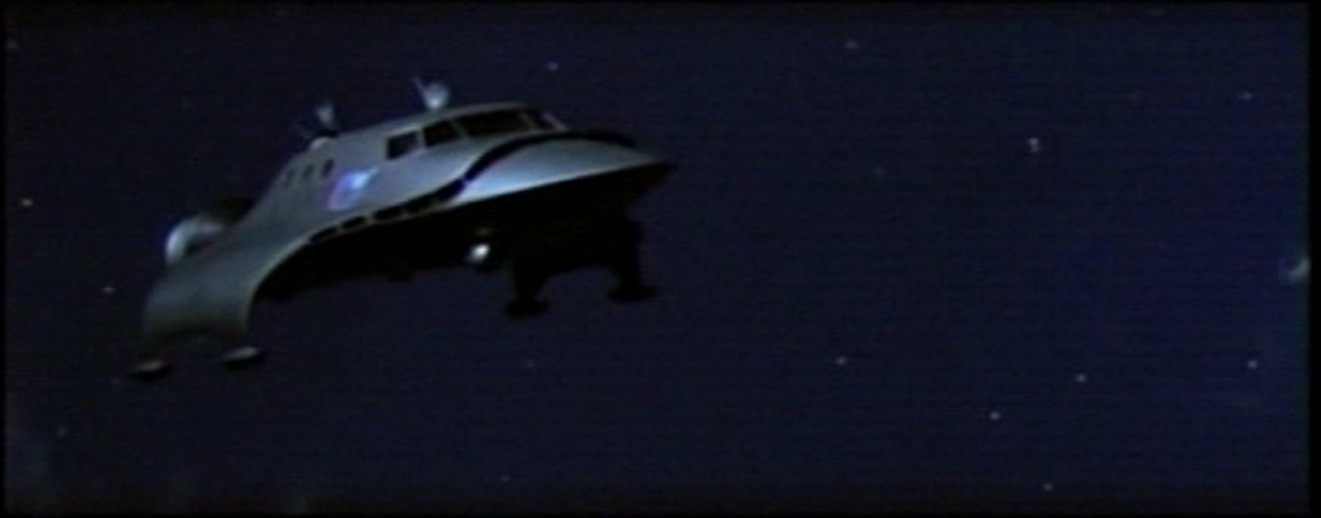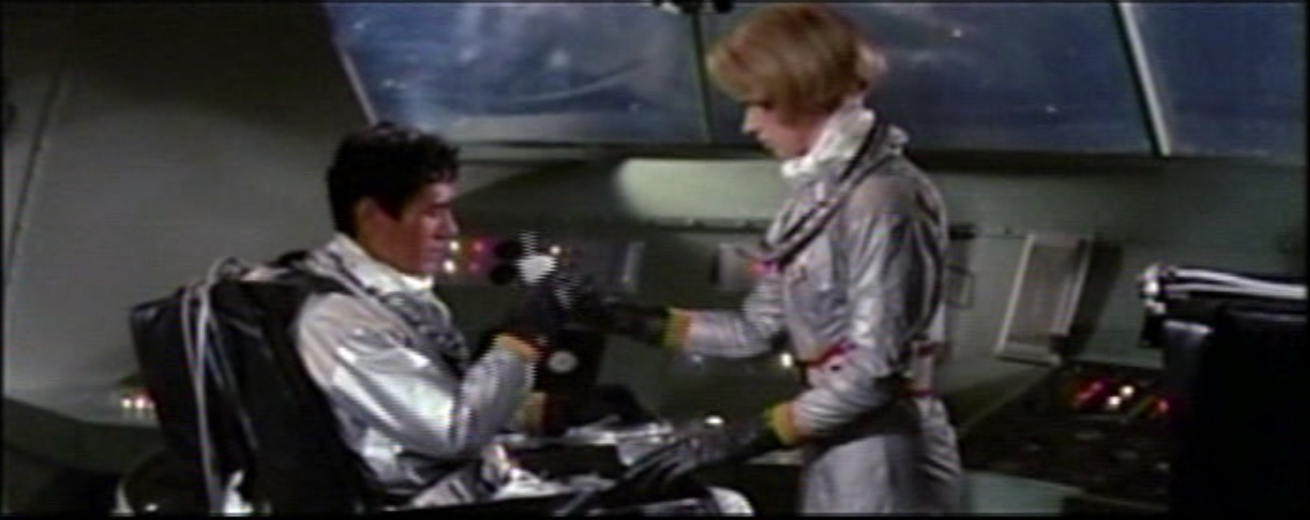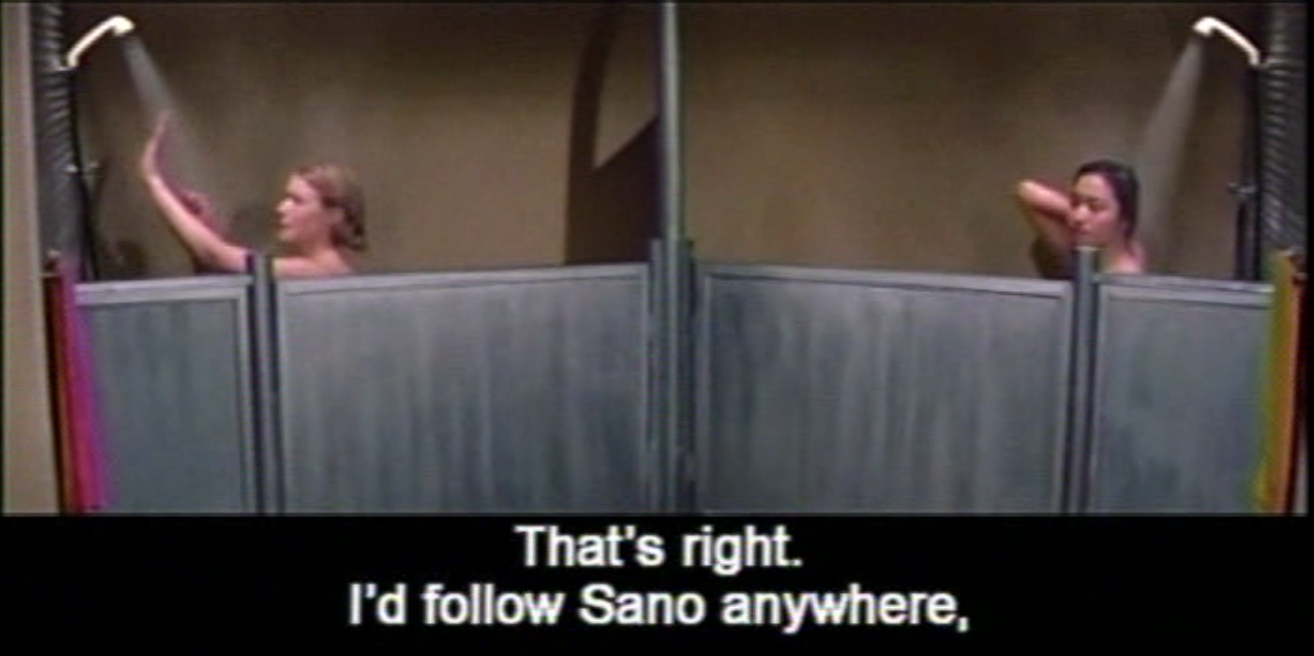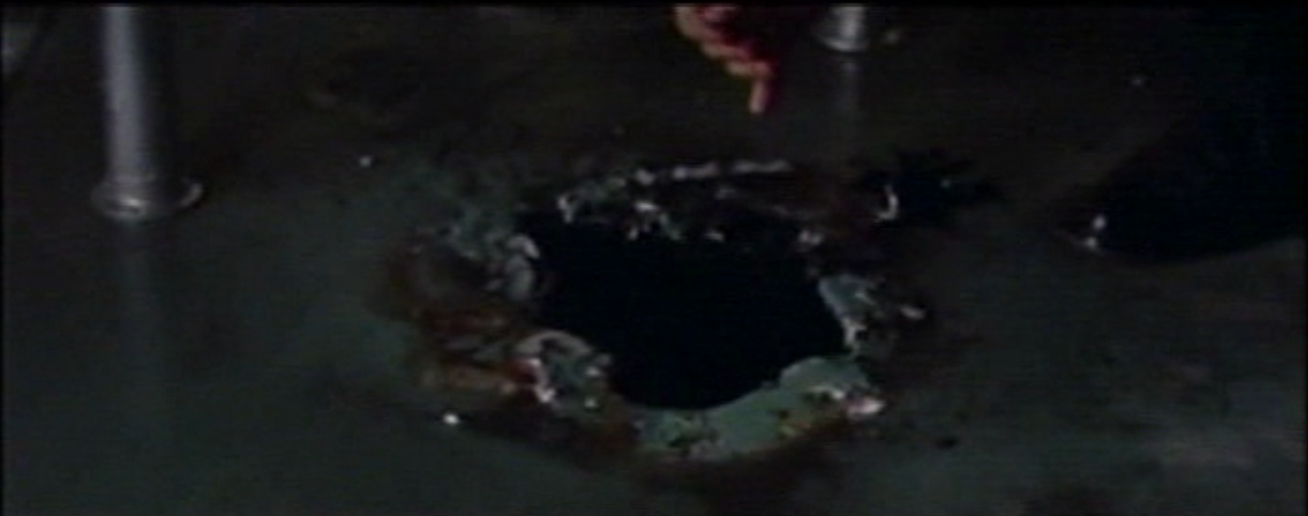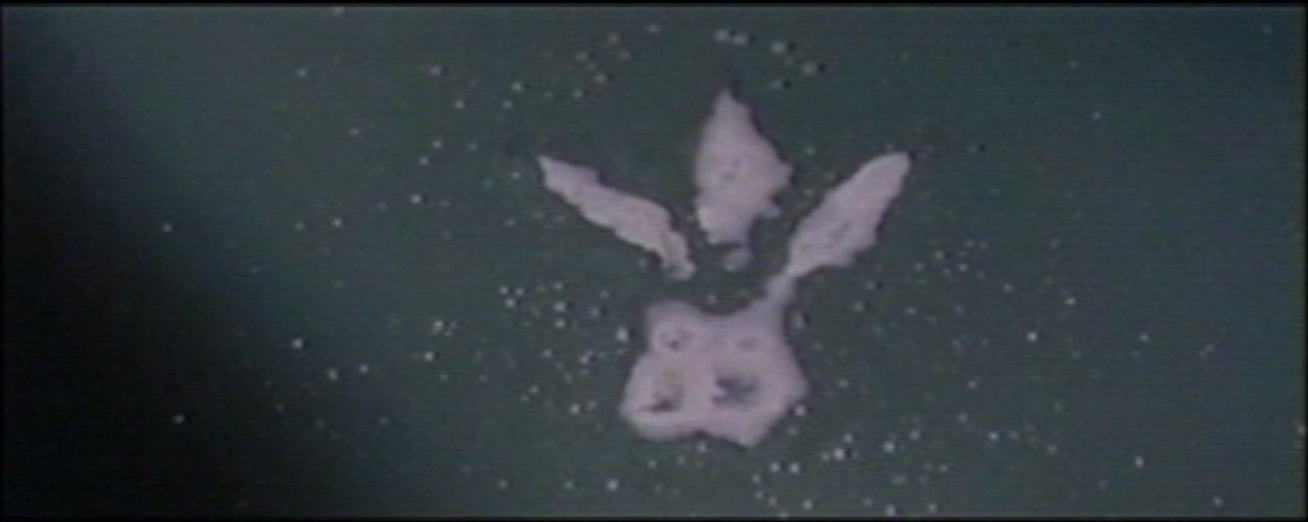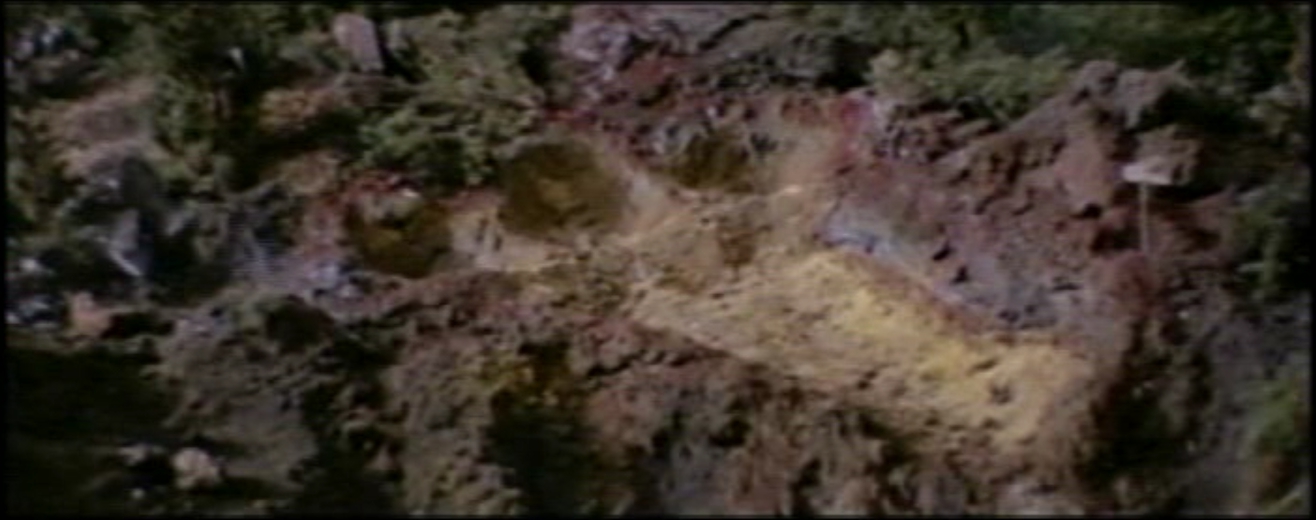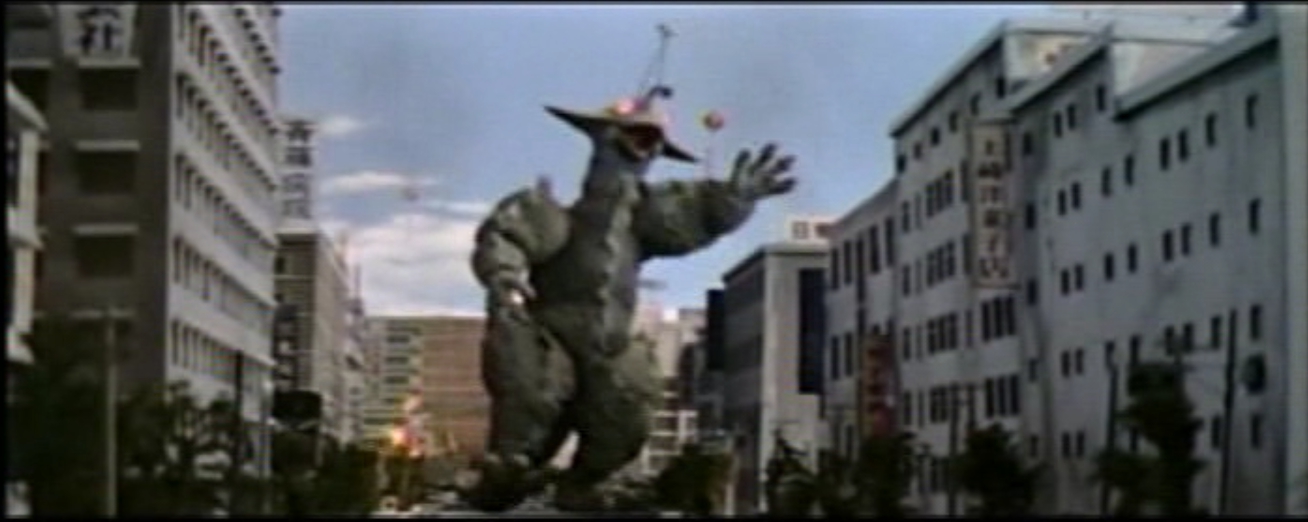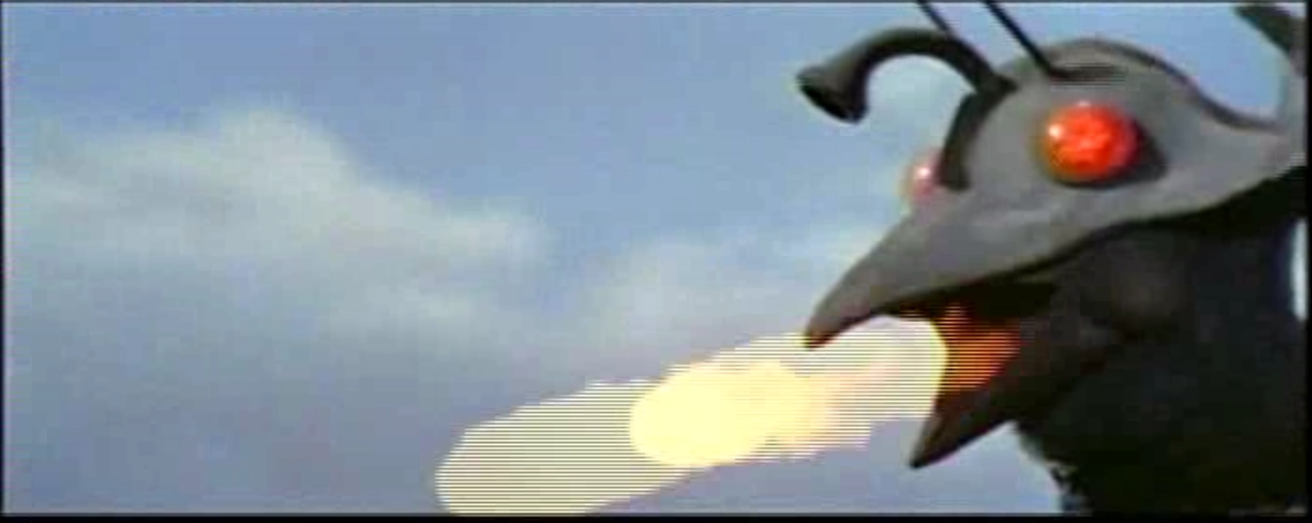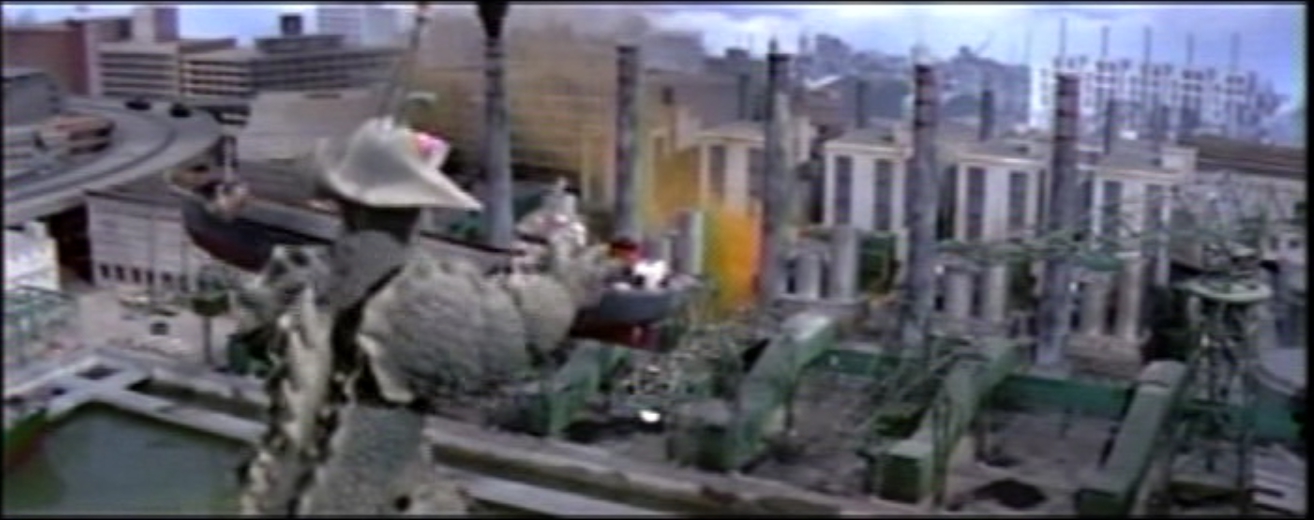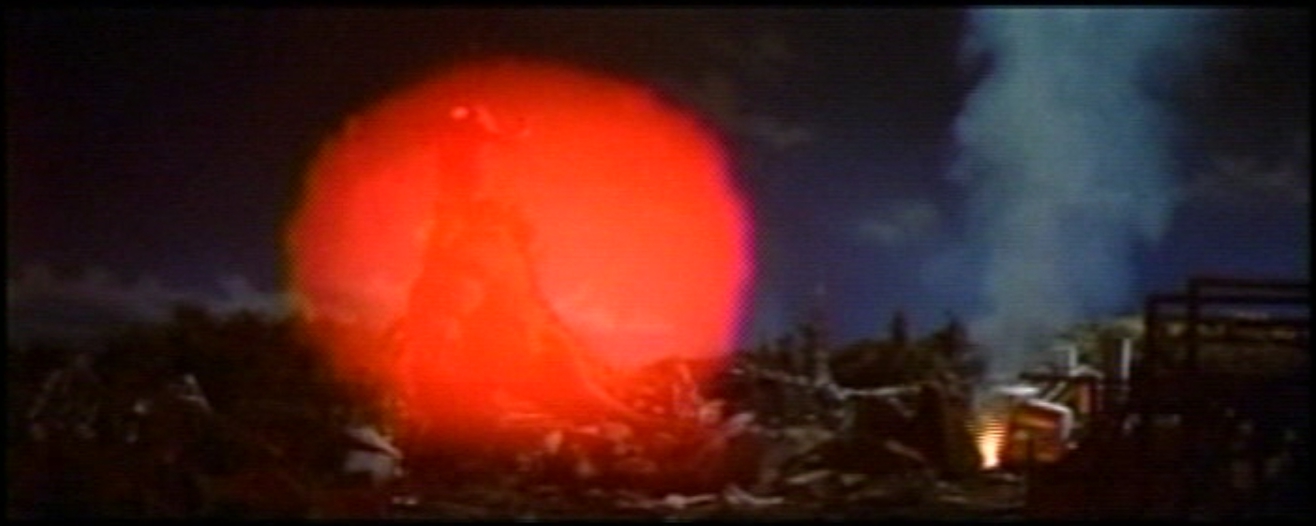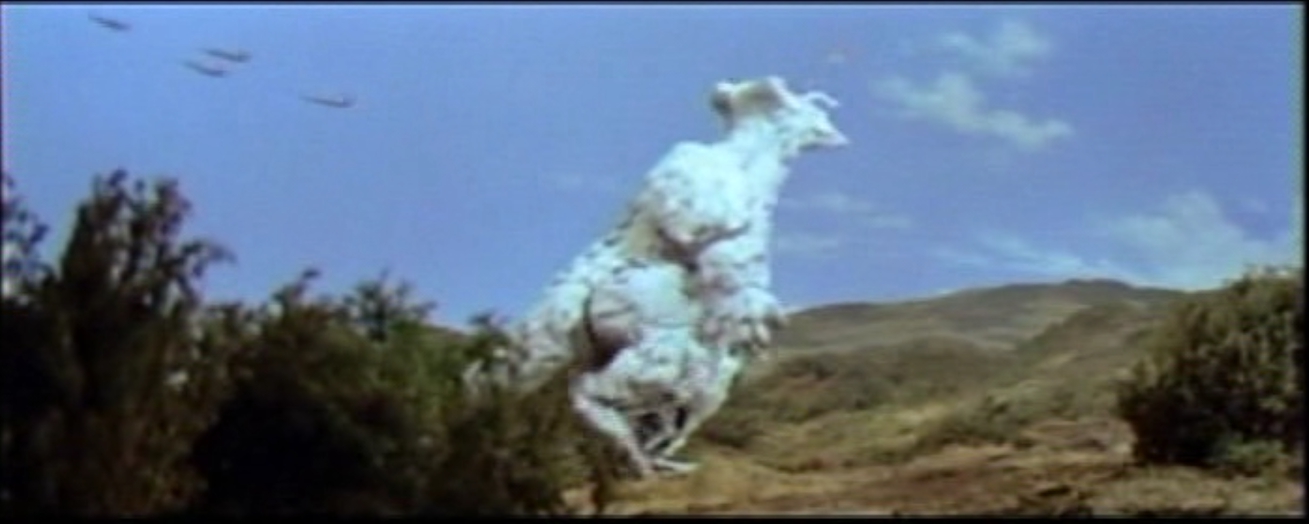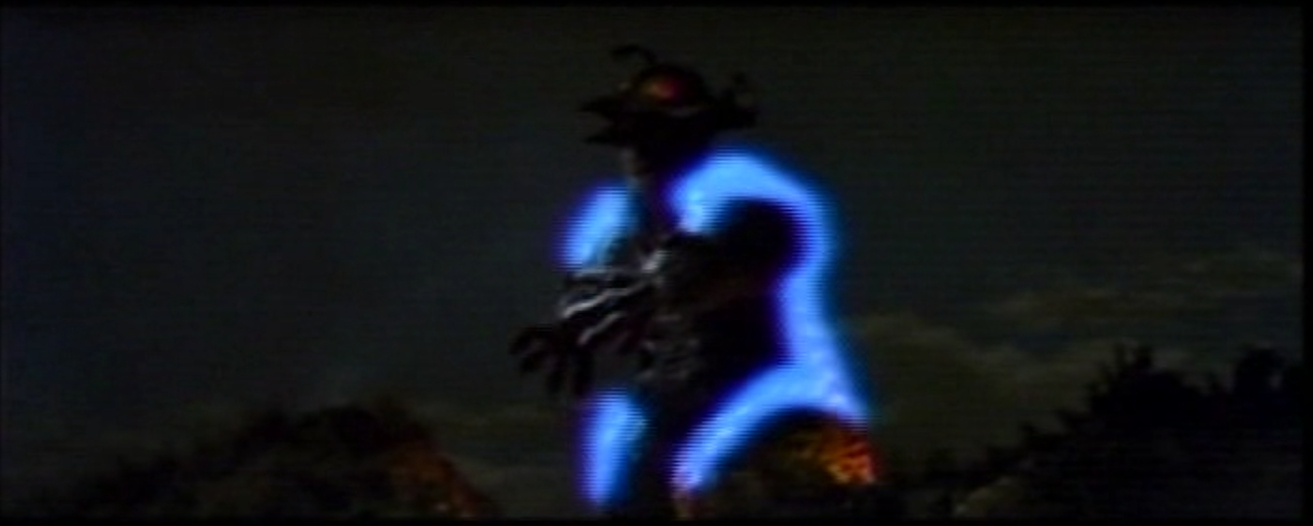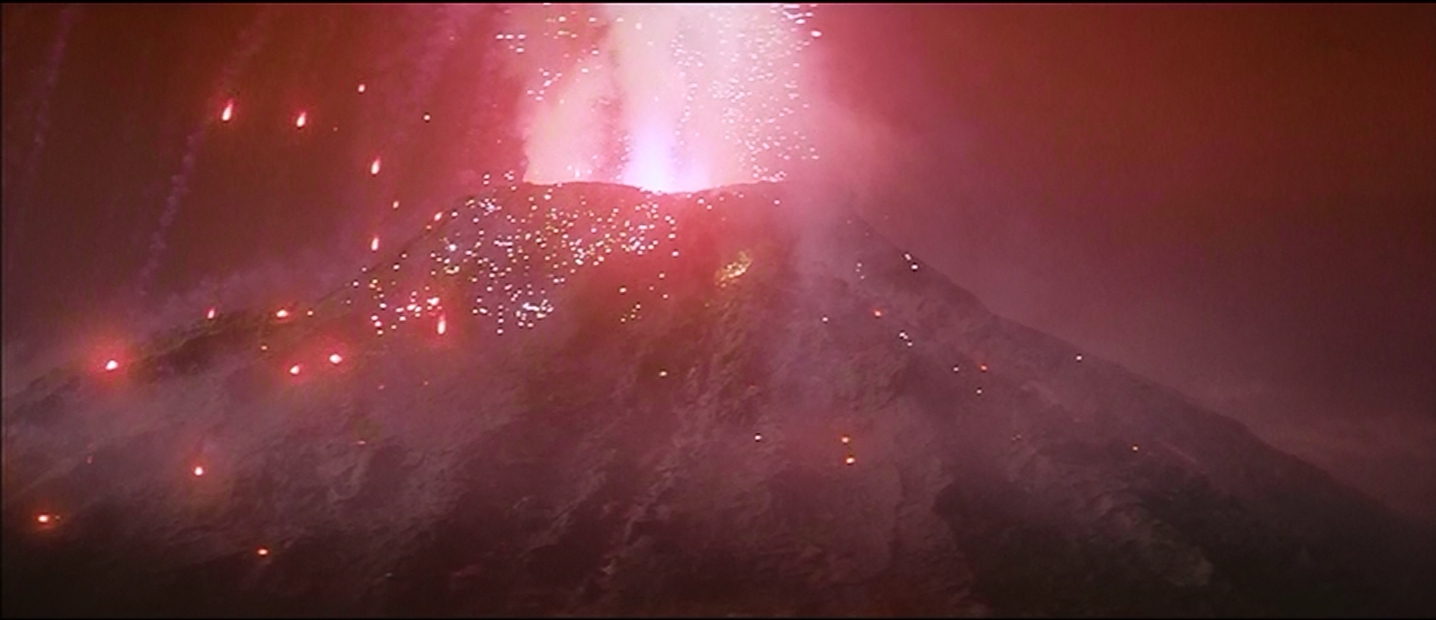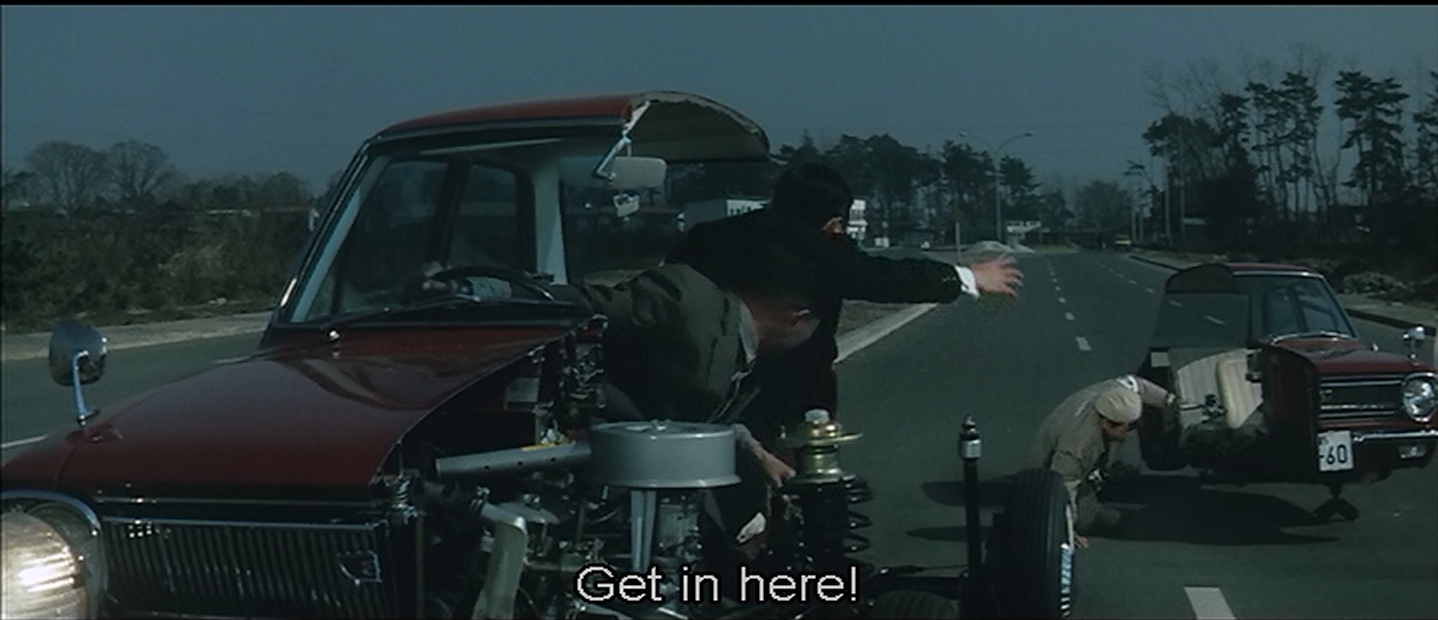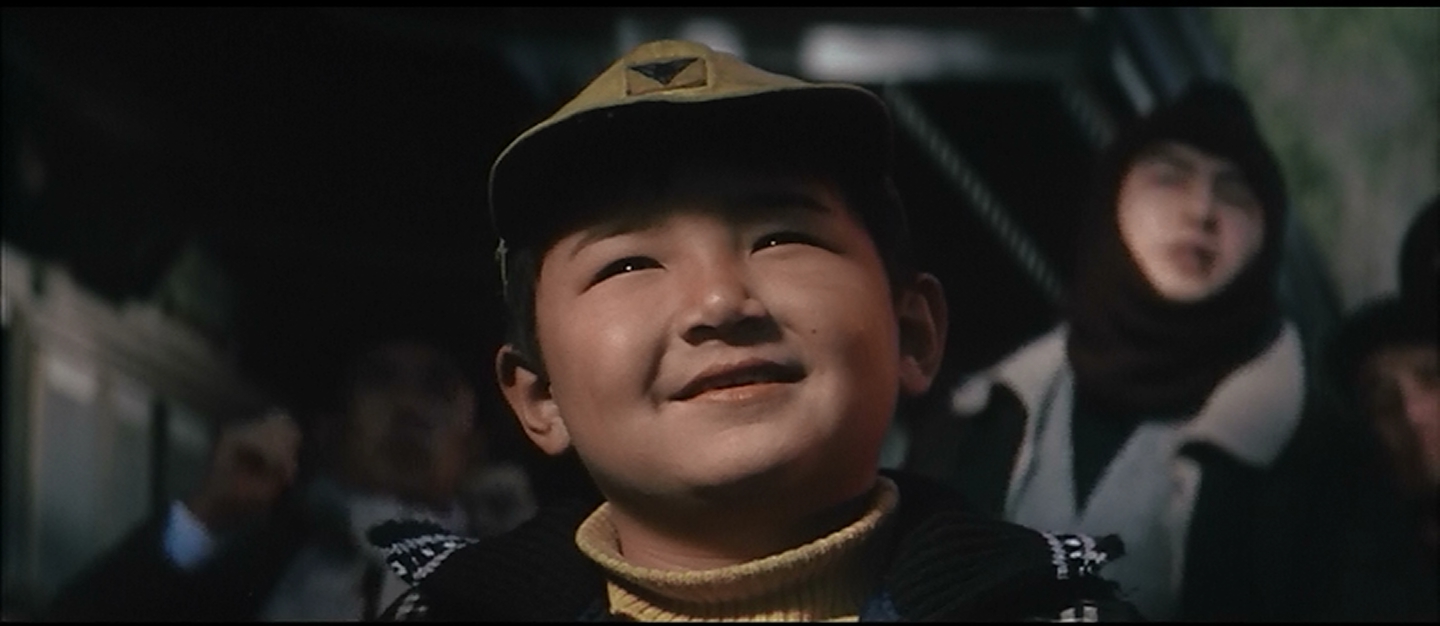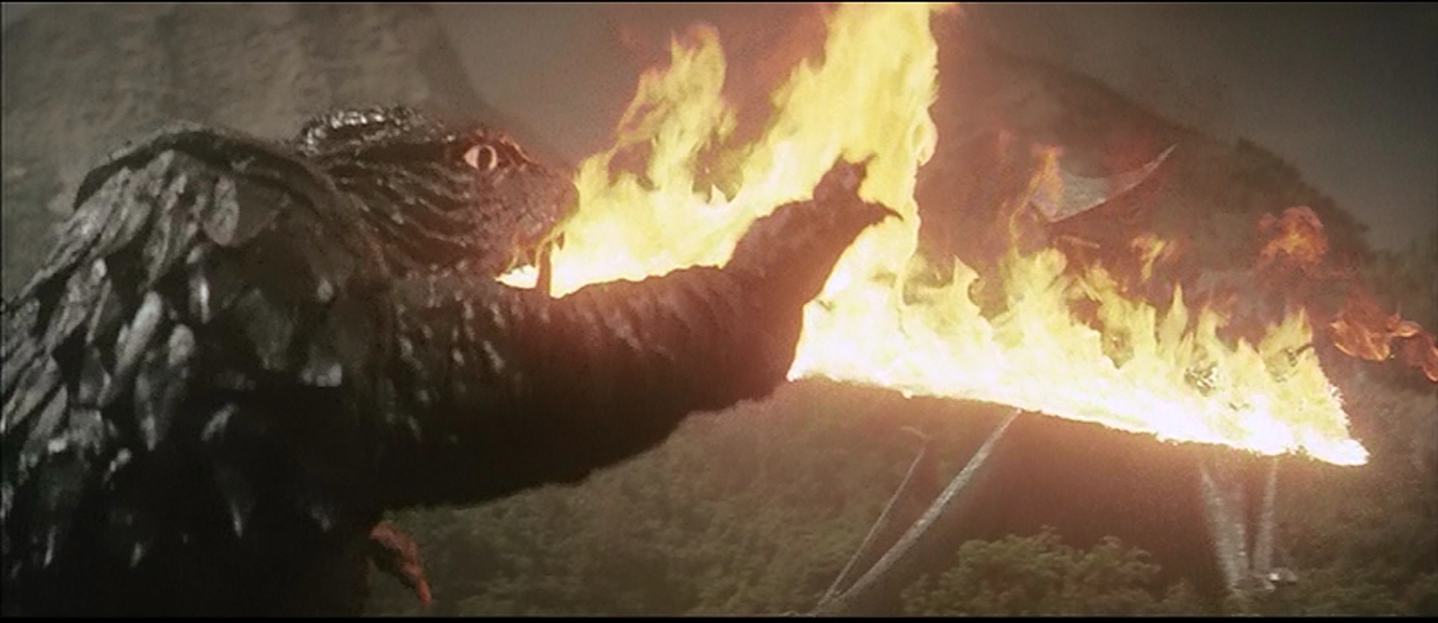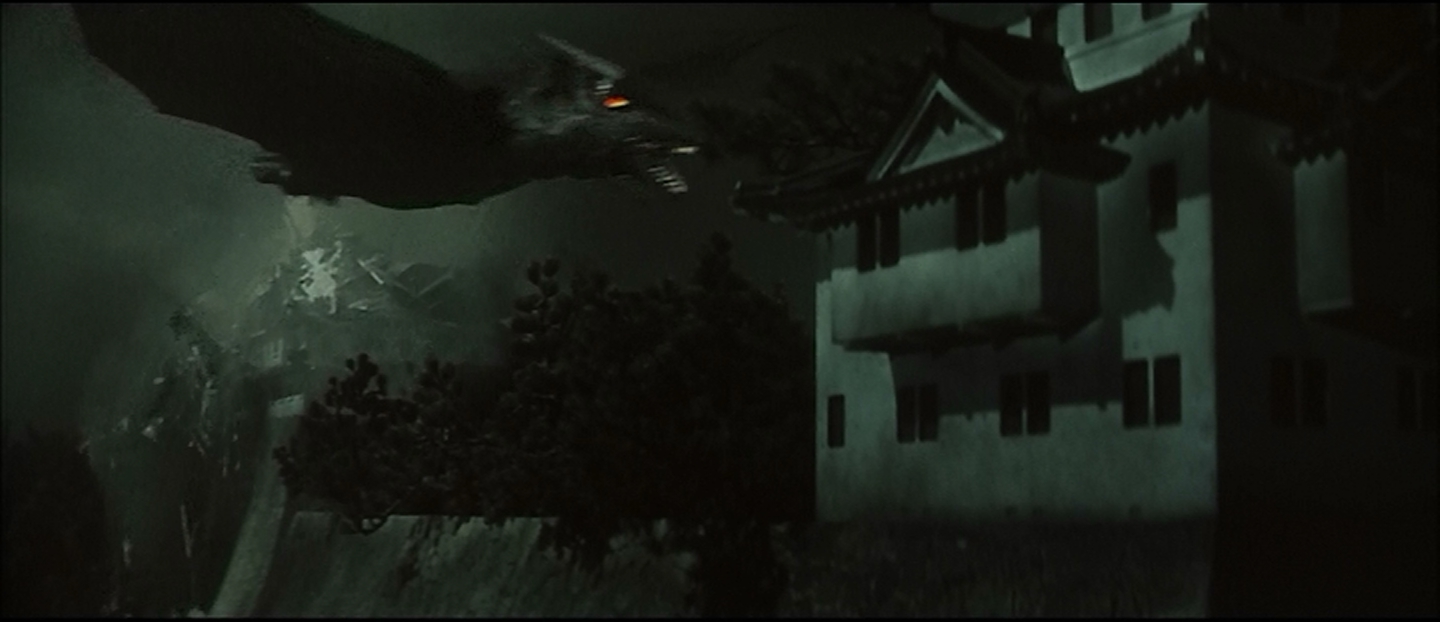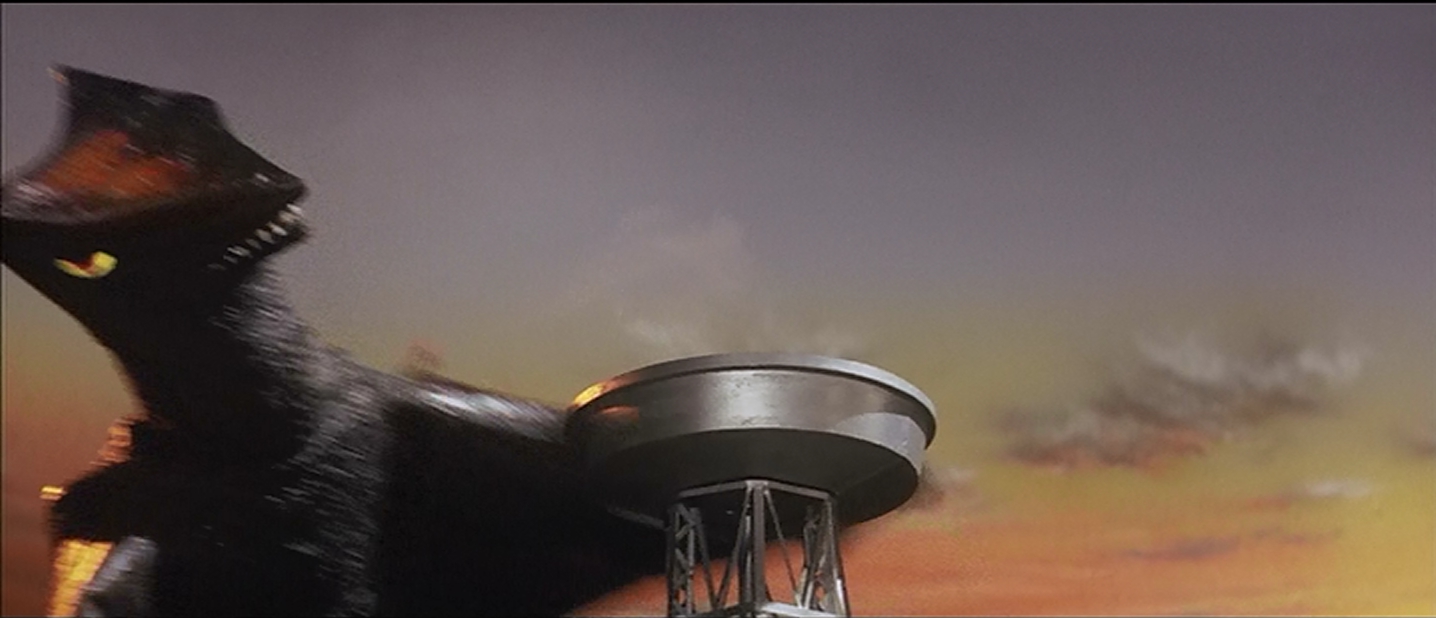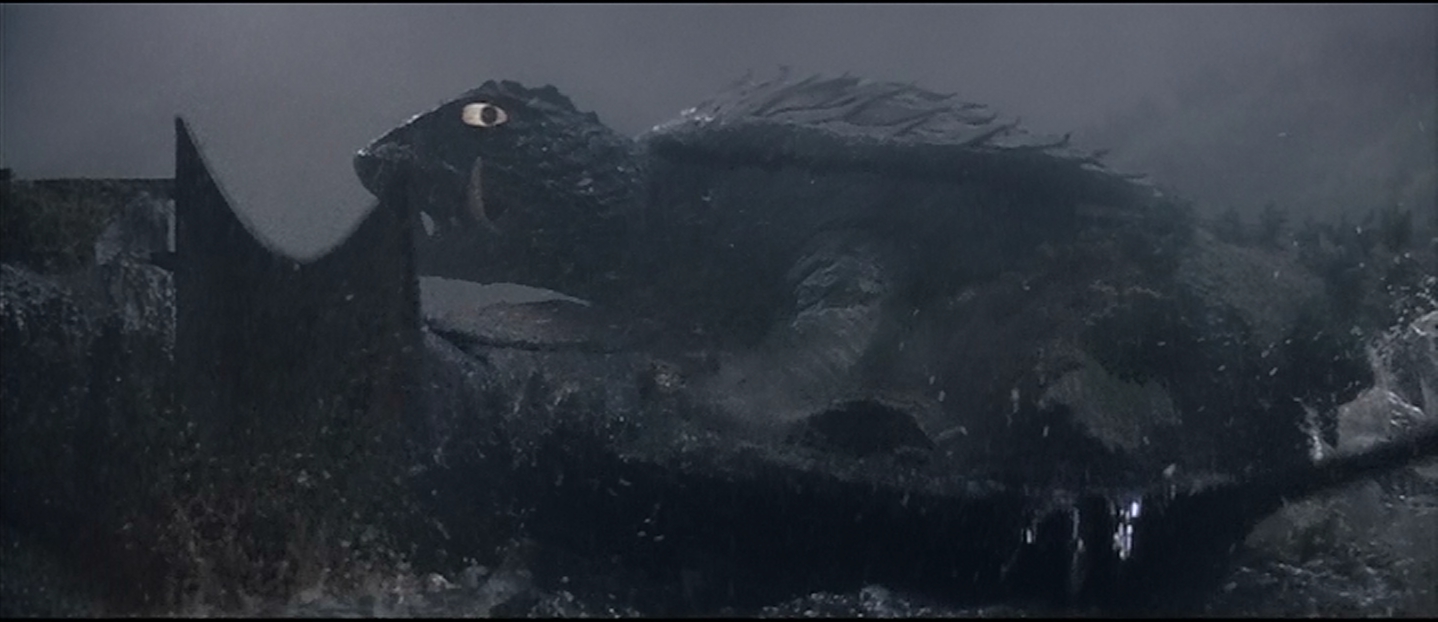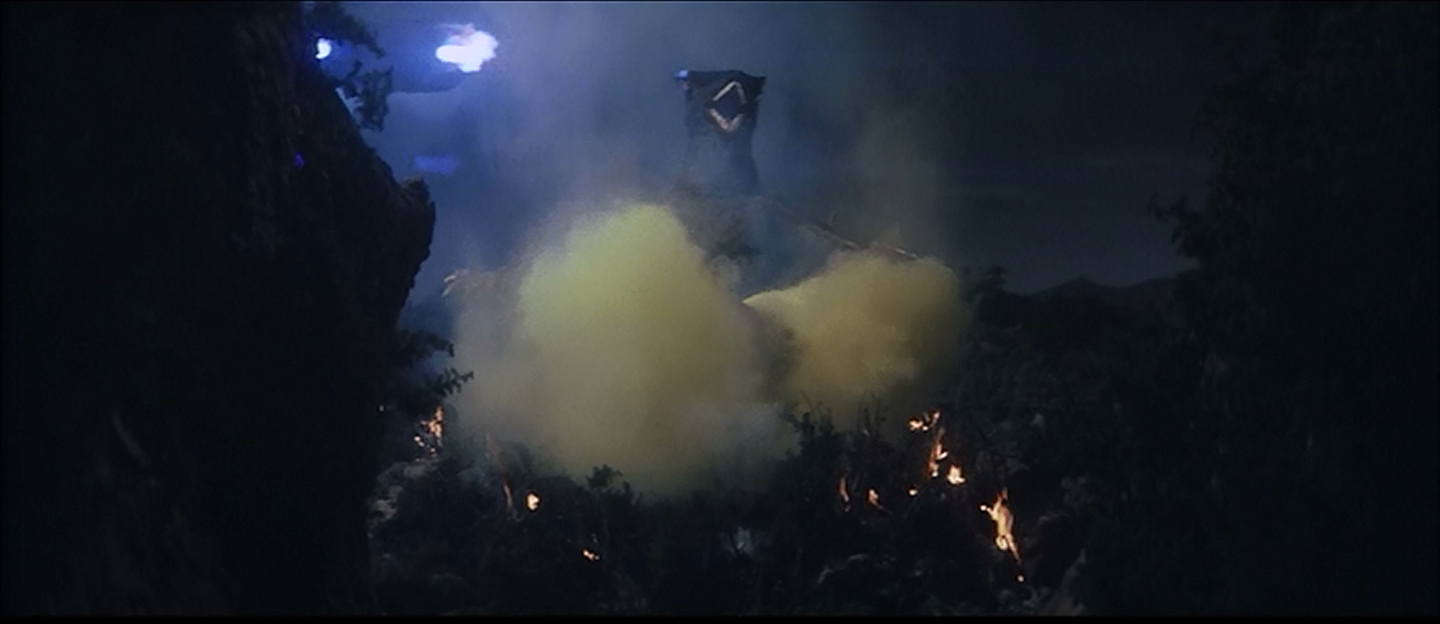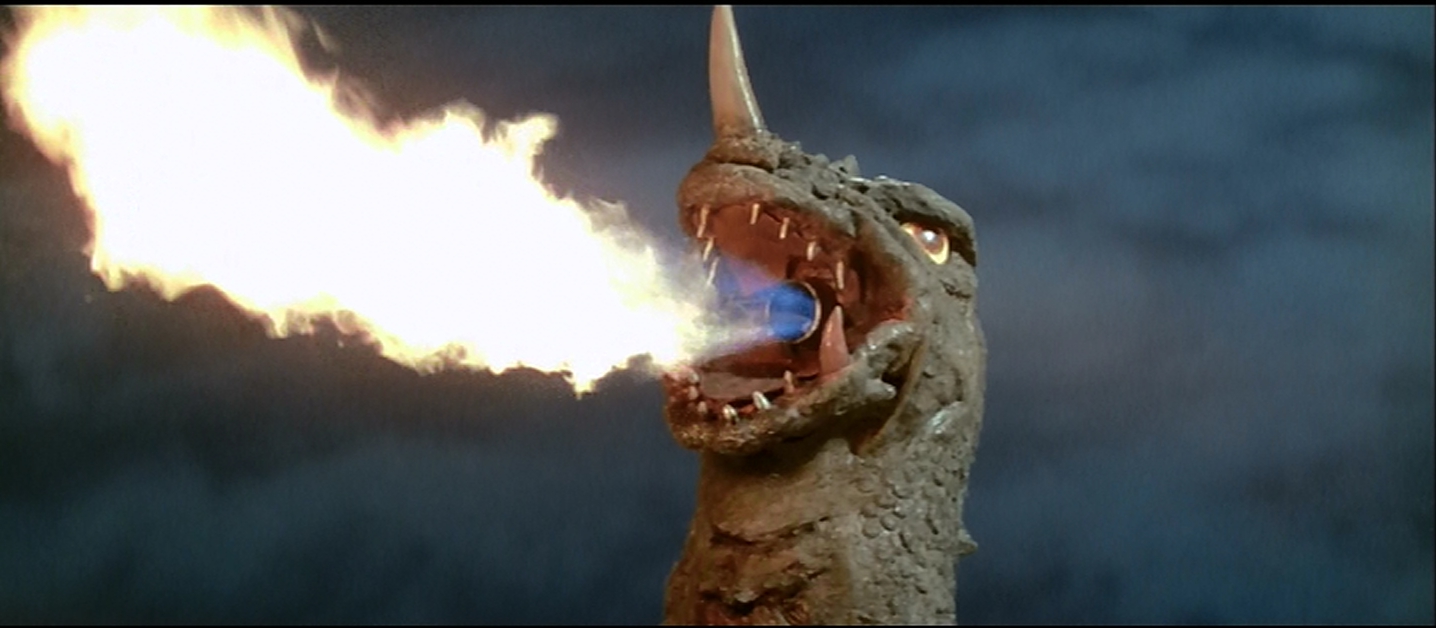
But early on, the film feels a lot like Giant Space Monster Guilala or Invasion of Astro-Monster, because South Korea has a manned space program. This is, oddly, a deal breaker for some reviewers, who consider it ridiculous. But a film-maker from a country that had no space program in the 60's really didn't have much choice. Either they could make everyone involved in the program American or Russian, but where were they going to find that many American or Russian actors, and why would they all be speaking Korean or Japanese? But beyond that, kaiju films are a mix of science fiction and fantasy, and why shouldn't a country which is proud of its achievements, dream that one day they will also reach for the stars?
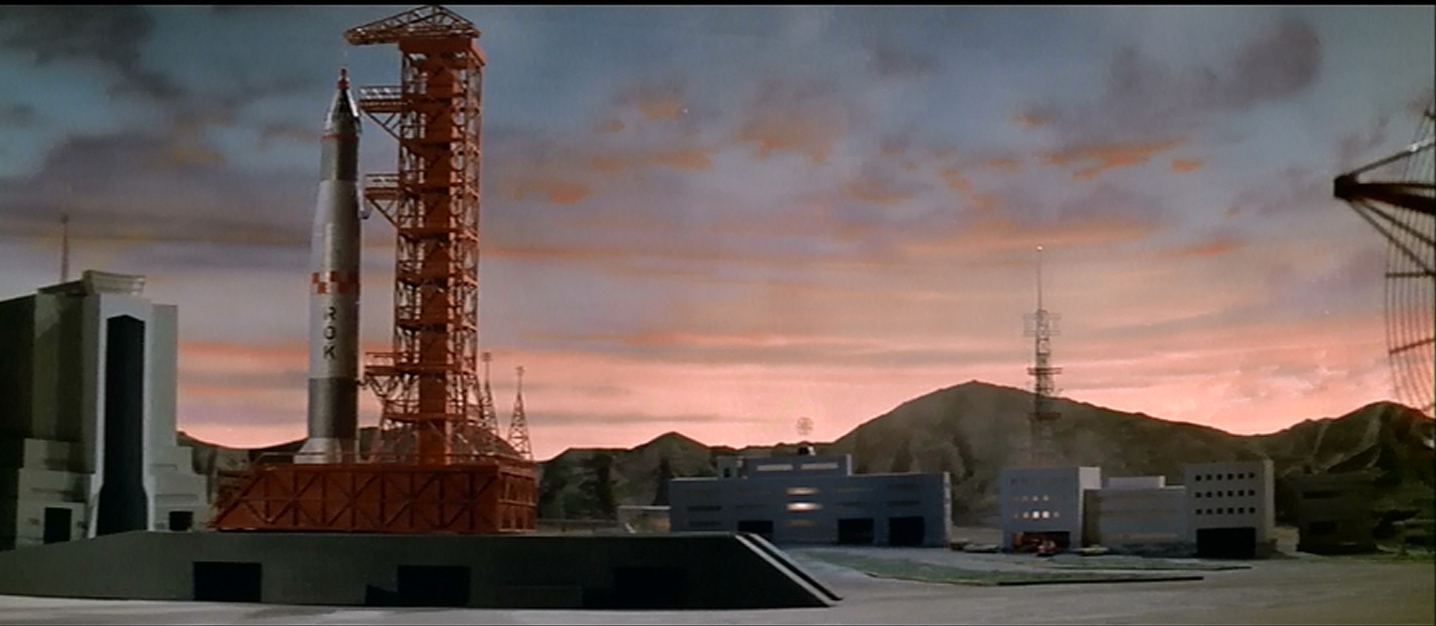
Unfortunately, the Korean cut of this film has been lost. All that I can access is the AIP dub of the film. And I feel that dubs tend to water down the acting abilities of the cast, making them less sympathetic.
Early in the film, we discover that Icho is a protagonist. He's a precocious kid, who has developed an ithcing ray that he inflicts on a pair of newlyweds. Ho ho, what a great character! We'll be seeing a lot of him.
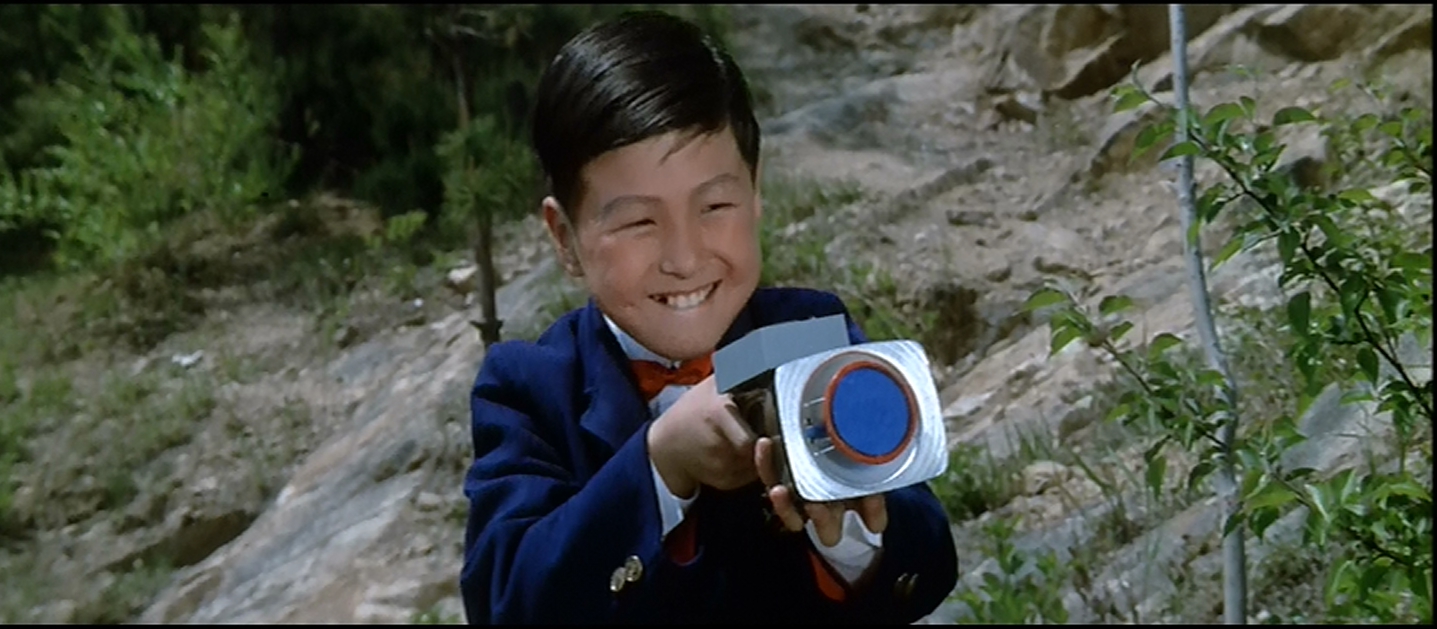
Yonggary is only sort of a nuclear monster. A nuclear detonation goes off... somewhere, and then an earthquake burrows its way to Seoul. Like many later films, Yonggary seems to be more about the threat of nuclear war than a protest of nuclear testing as was the original Godzilla. Which is certainly explicable; Korea was much more affected by the Cold War than by nuclear testing. It is notable, however, that the gigantic monster comes from far away and travels to Korea for no known reason. If Godzilla had a tenuous claim to being a symbol of American military might, Yonggary could also be read that way. But we never know whose nuclear weapon is dropped, and this is after China's initial nuclear tests, so this could be a projection of Korea's fears of Chinese nuclear aggression.
Yonggary itself first shows after twenty-six minutes, so we haven't been waiting around for long. Our first gimpse is his back, which bears a stubby triple fun pattern, likely borrowed from Godzilla. Overall, the suit is pretty good. The reticulated front pattern is a particularly nice touch. Unfortunately, and I don't know if this is a fault of the AIP translation or not, Yonggary has the same cry. Every time. It's a good cry, metallic and menacing, but it's the same damn one every time it opens its mouth. Further, they do not match the motions of Yonggary's mouth. The cry is drawn-out, but the mouth is always going, which makes Yonggary look like he's chewing gum.
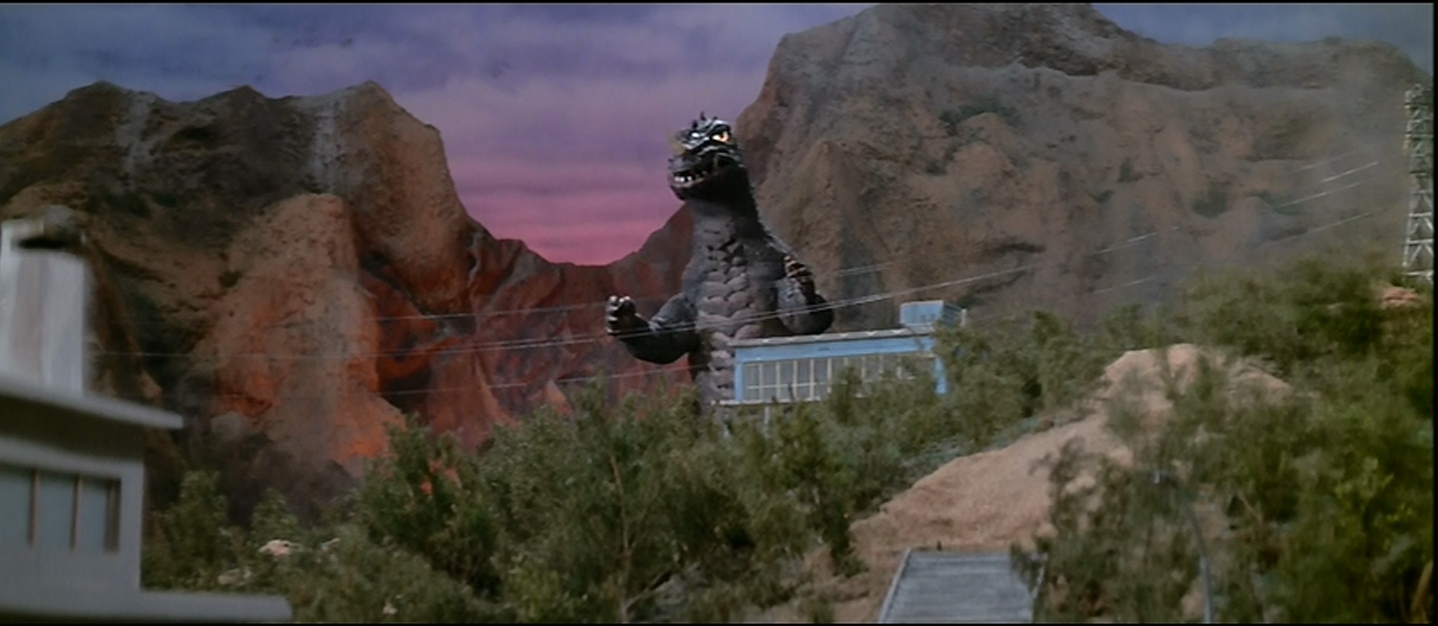
There are several common sequences in the film, panicked people running to escape the monster, the preacher glad that the end of days is finally here (a nice reference to Gorgo), the greedy businessmen feasting with nihilistic abandon, the kids dancing their cares away, the initial efforts of the military, the symbolic melting of the first tank.
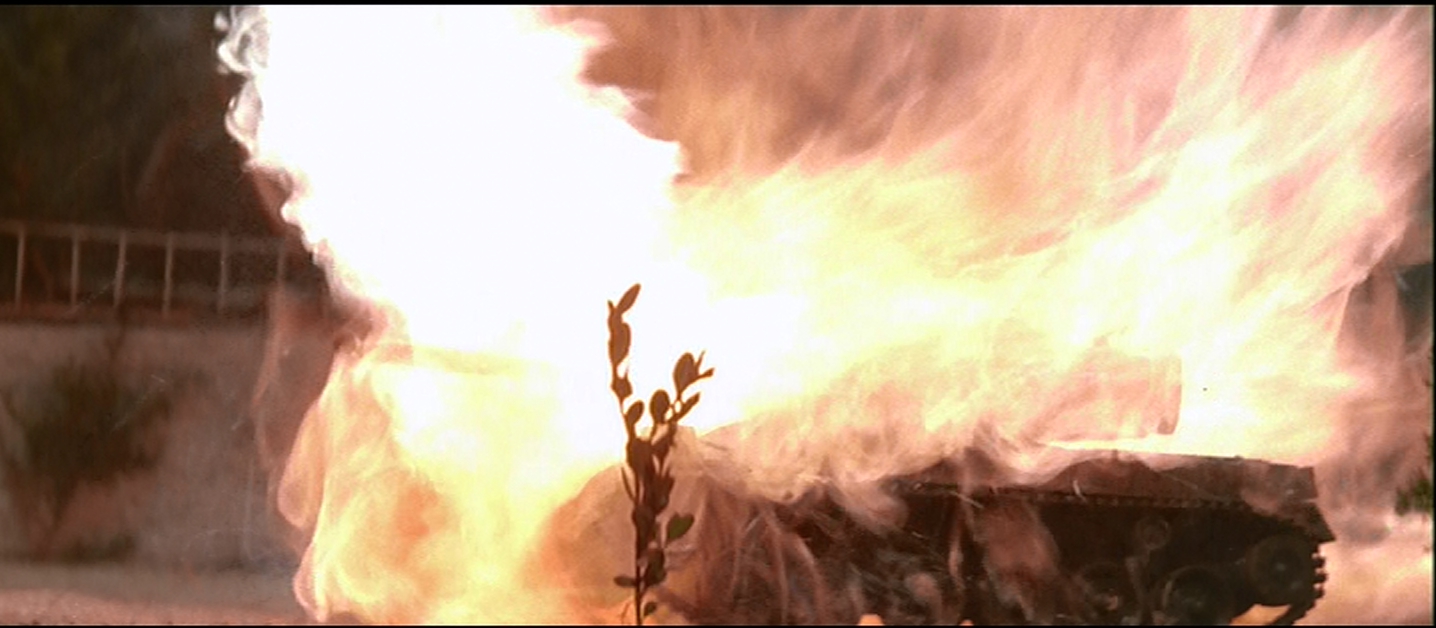
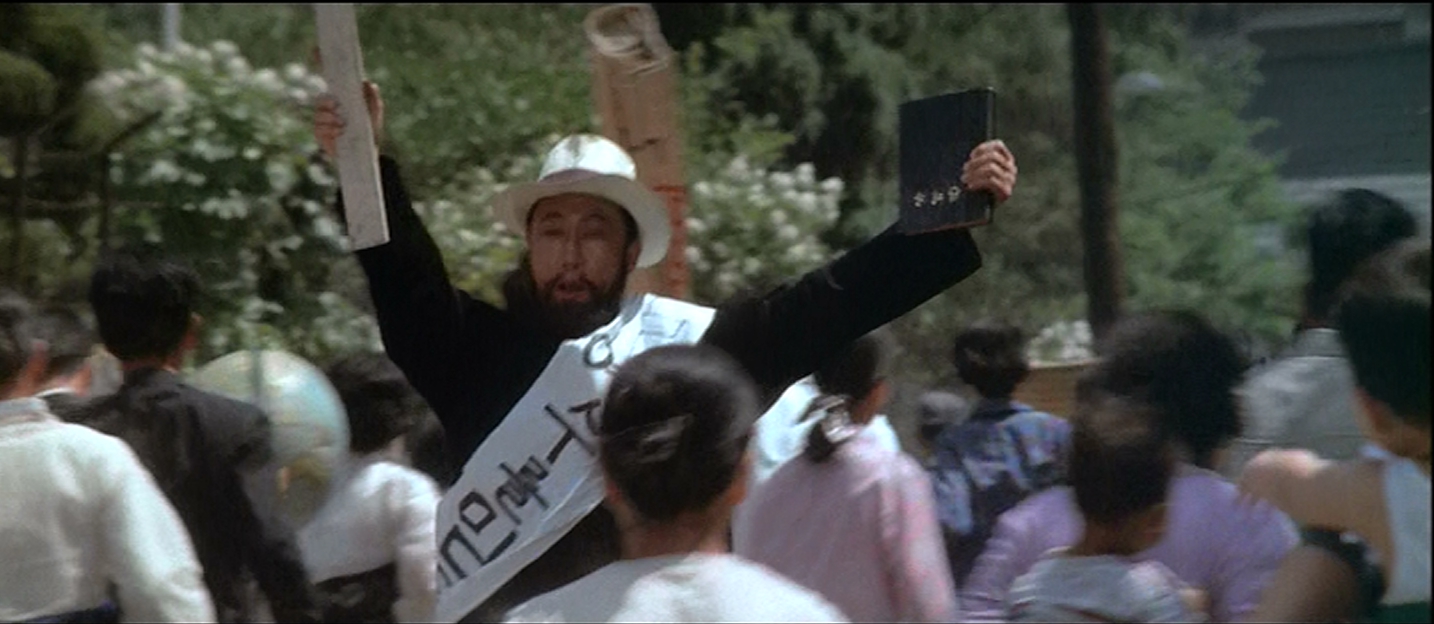
The rampage is witnessed by the adult protagonist (Ilo) and the kid (Icho), and Icho finds a novel way to experience the monster close at hand, by climbing down a manhole. Yonggary steps directly on the manhole, which gives a moment of tension, despite my dislike of the Icho character. It's a clever way to get Icho very close to Yonggary.
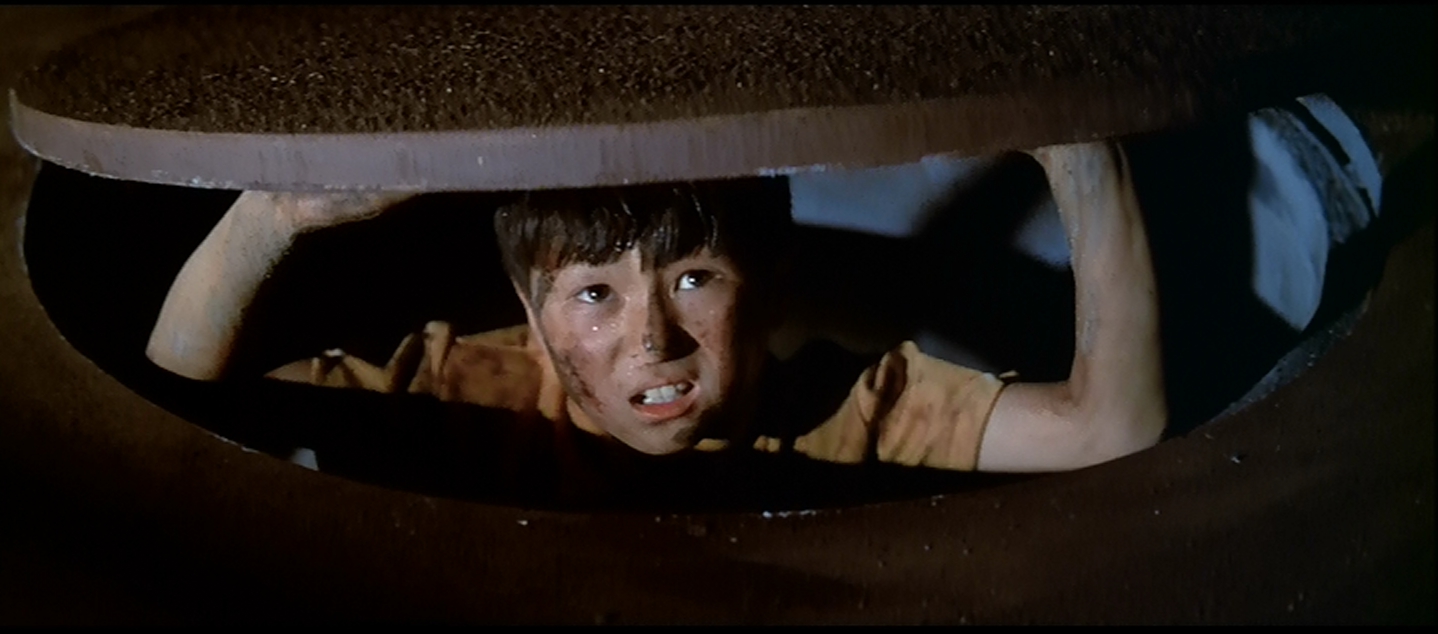
Yongarry can be distracted by helicopters that fly slowly, and so it is lead out of Seoul into a refinery where, in another tribute to Gamera, he sucks down a storage tank of oil. But when he destroys a container full of ammonia, he begins to itch at himself, providing Icho with the clue he needs to eventually destroy the monster. The Korean military then uses some experimental missiles on Yonggary, which of course doesn't work. But first, there's a strange interlude in which beach music plays and Yonggary dances. It's a really weird bit, possibly to give the monster more sympathy, because nothing makes the heart sing like a kid and giant monster dancing together.
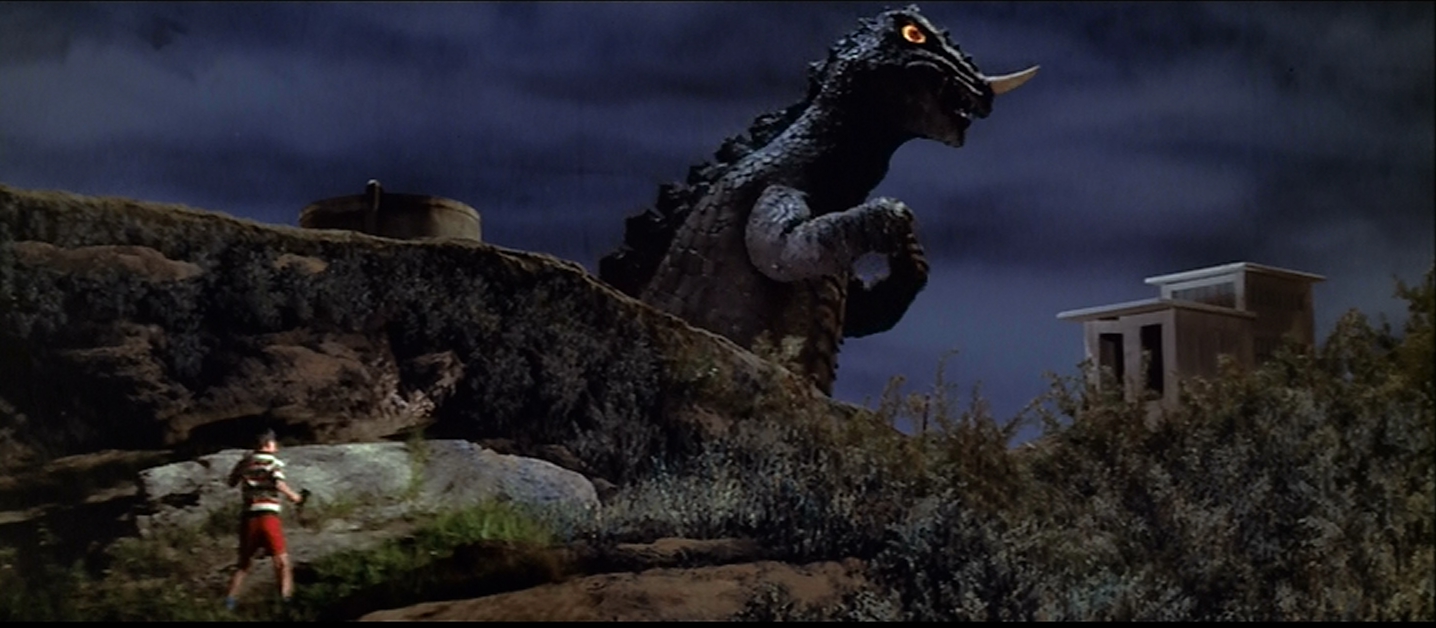
After which he really nails his debt to Gamera by using his nose horn beam to slice a jeep in half. Exactly the same trick (with the same problem--again, you can see the supporting wheel in the sliced-open Jeep) way that Gyaos did.
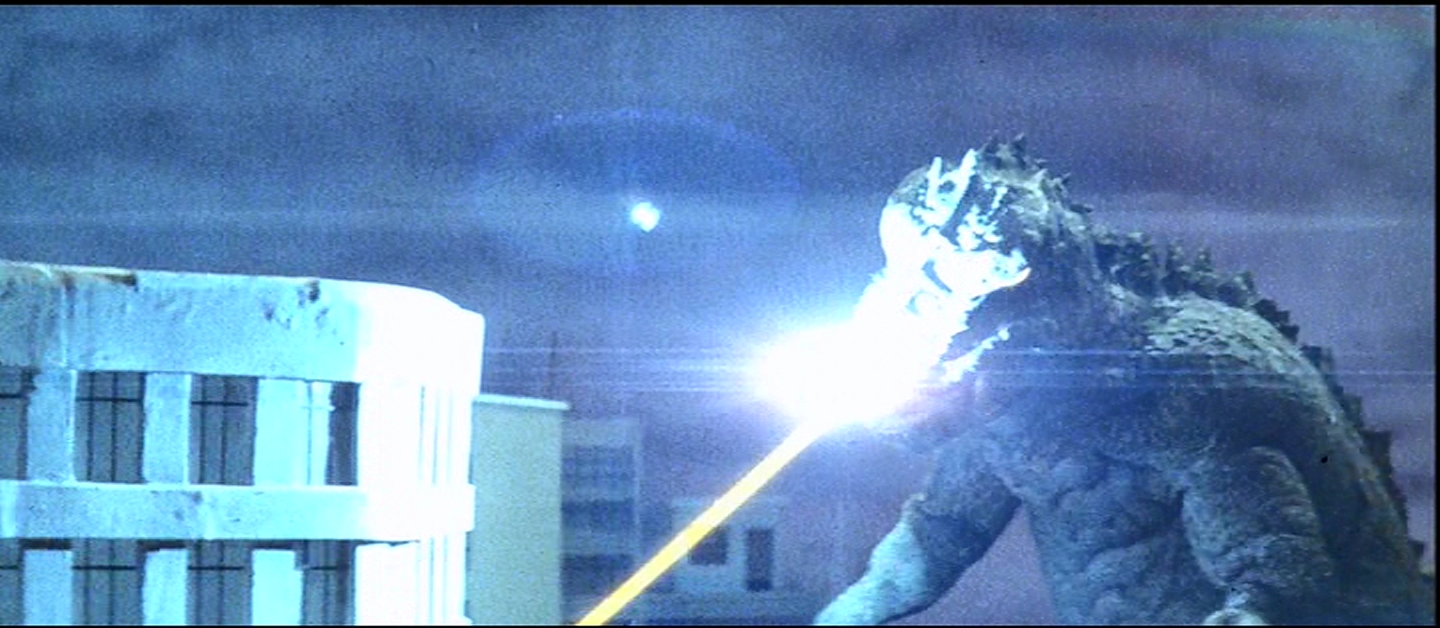
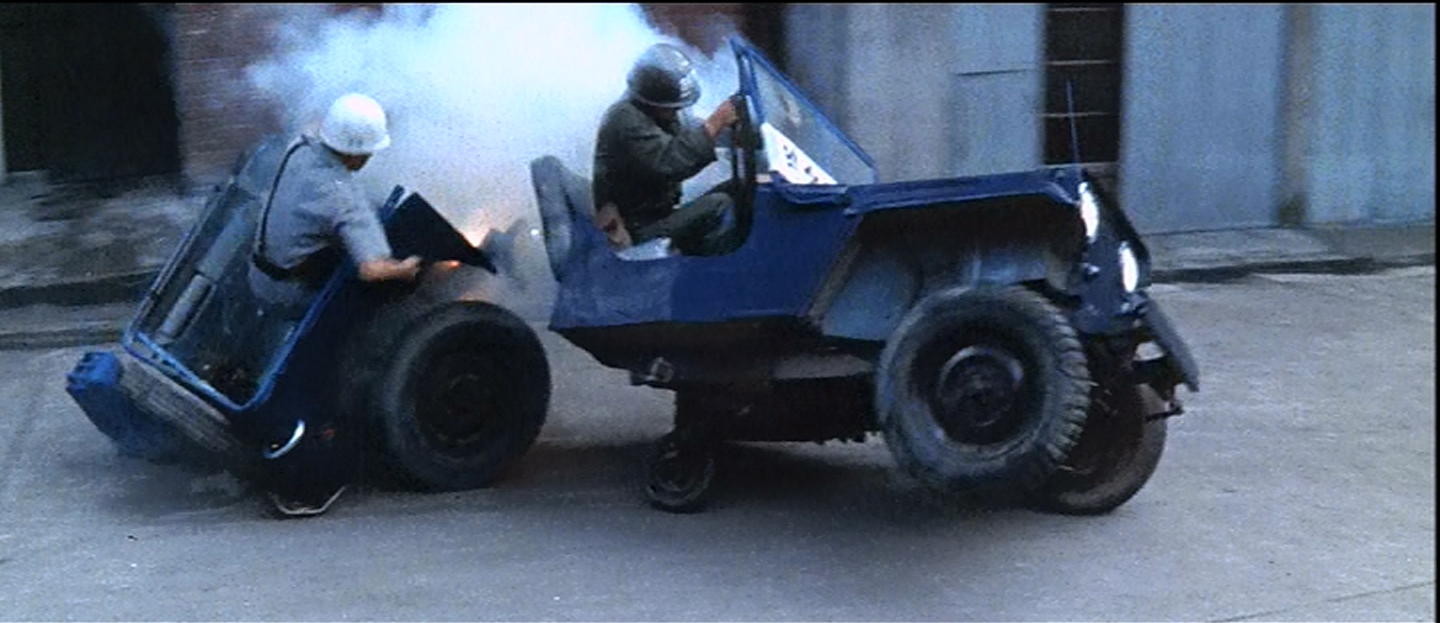
There's a moment, as planes attack, that the Yonggary suit catches fire, just below the left eye. This leaves a notable chunk of the rubber skin flapping around for the rest of the sequence. Probably a good thing they film the scenes with explosions last.
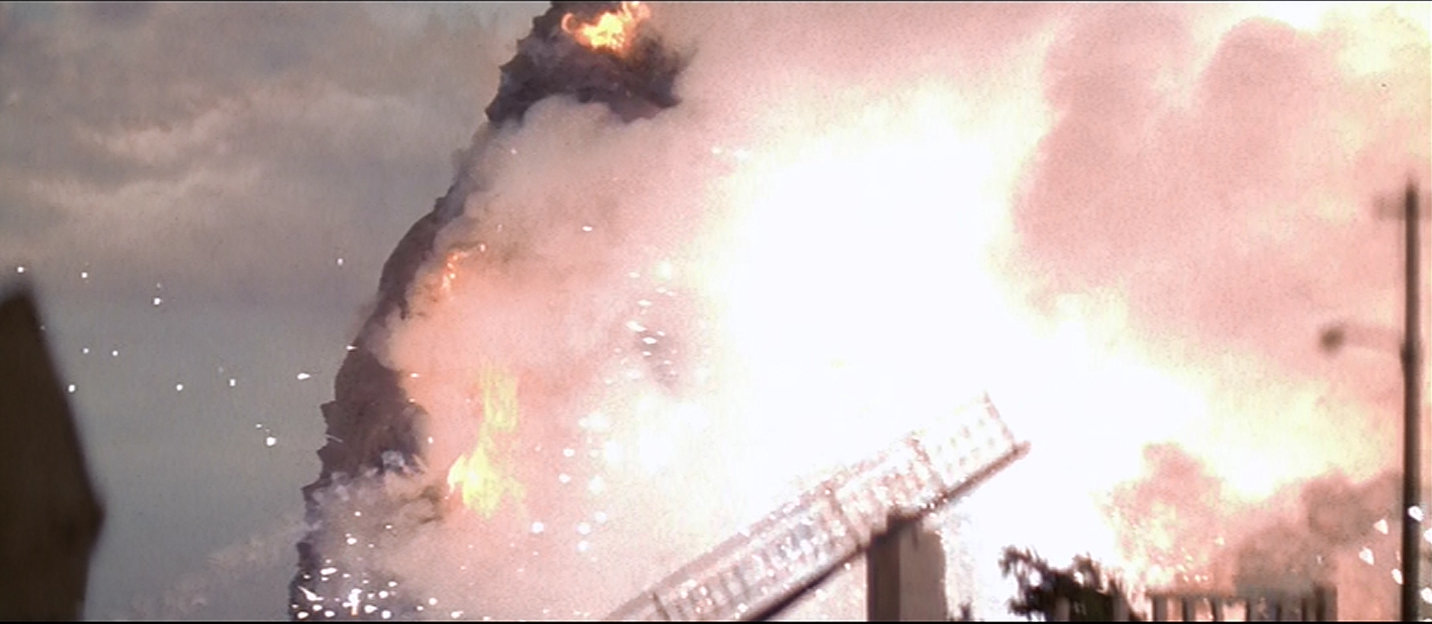
Further, as the polits retreat, Yonggary uses his nose horn to slice one of the Lockheed F-104 Starfighters in half. This might even be the same model that we saw Gyaos slice through.
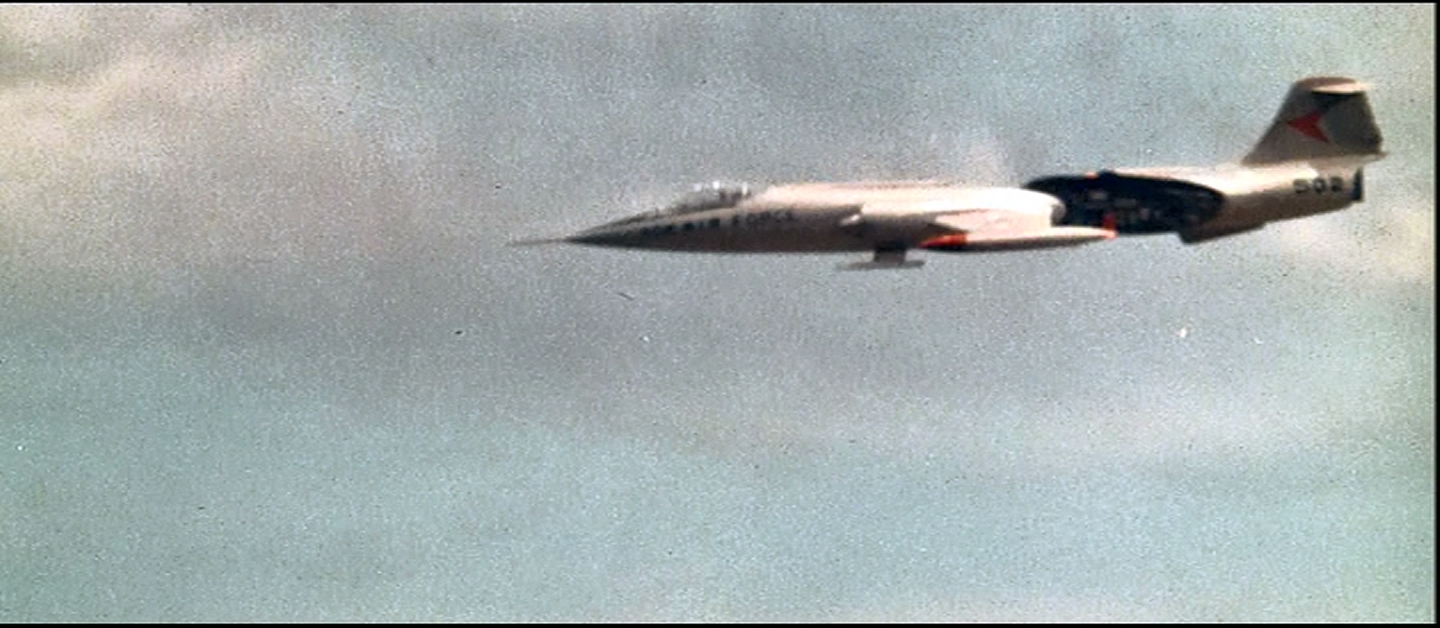
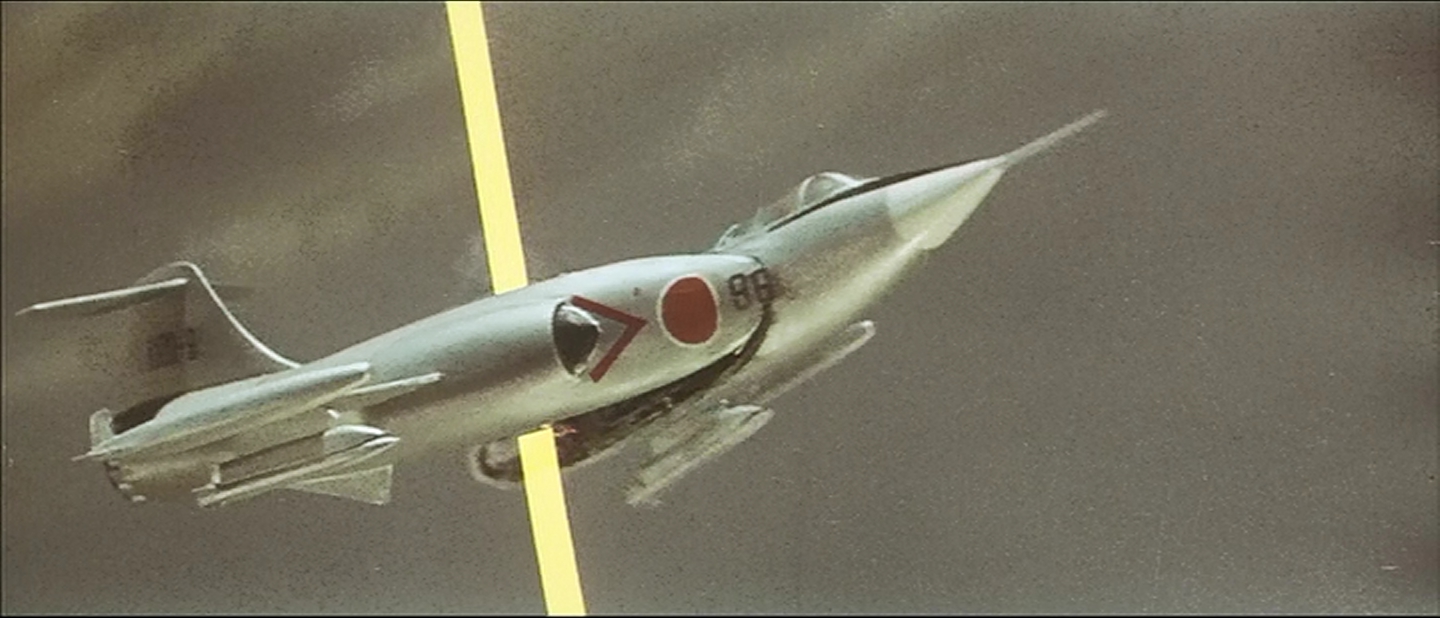
But the monster cannot be allowed to live. Ilo and Icho, in a helicopter, drop loads of ammonia on Yonggary, who collapses, twitches, and bleeds out in one of the more disturbing monster deaths. Of course, Ilo has his fiance up in the helicopter, and she's laughing about it. The film is surprisingly tone-deaf about its emotional tenor.
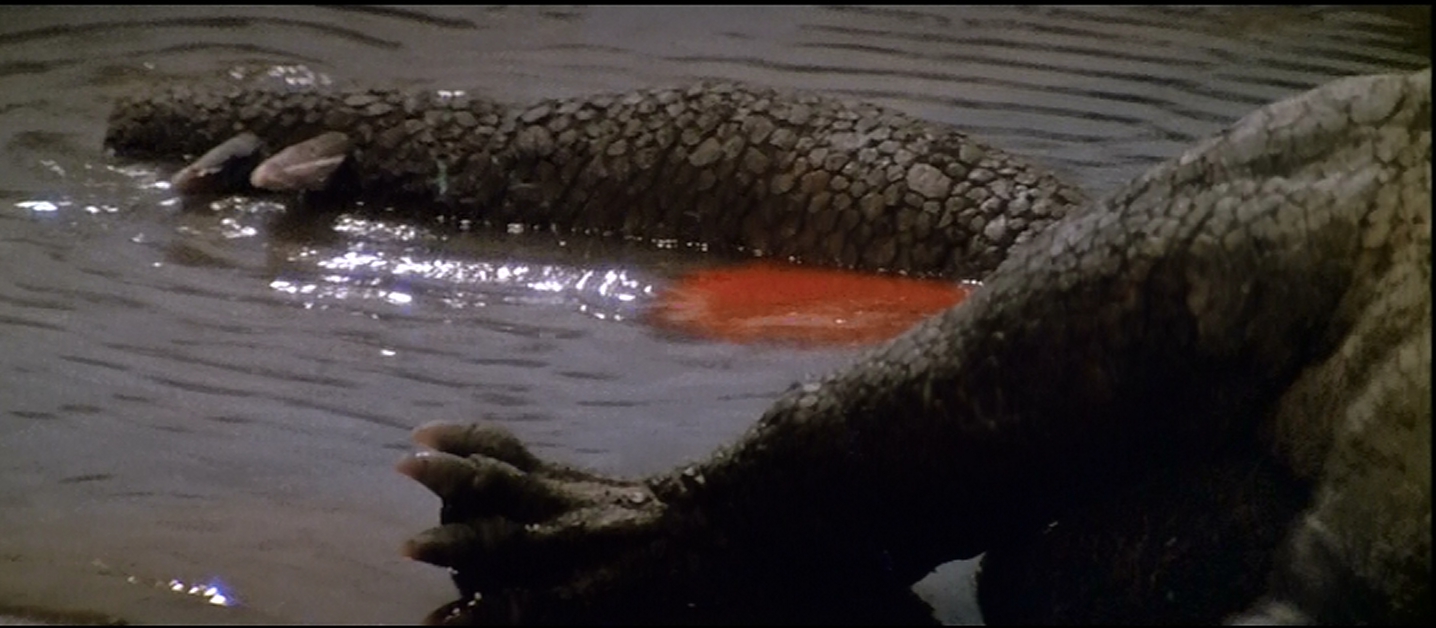
Despite my complaints, I do enjoy Yonggary. The monster effects are decent, and it's got a couple fresh ideas. The child is pretty annoying, but the long monster effects sequences make this easier to bear. As far as transfer goes, the MGM Mignight Movie version, a double sided disk with Konga, is definitely the best. Presented in widescreen, it's also notable less muddy than other versions I have owned.
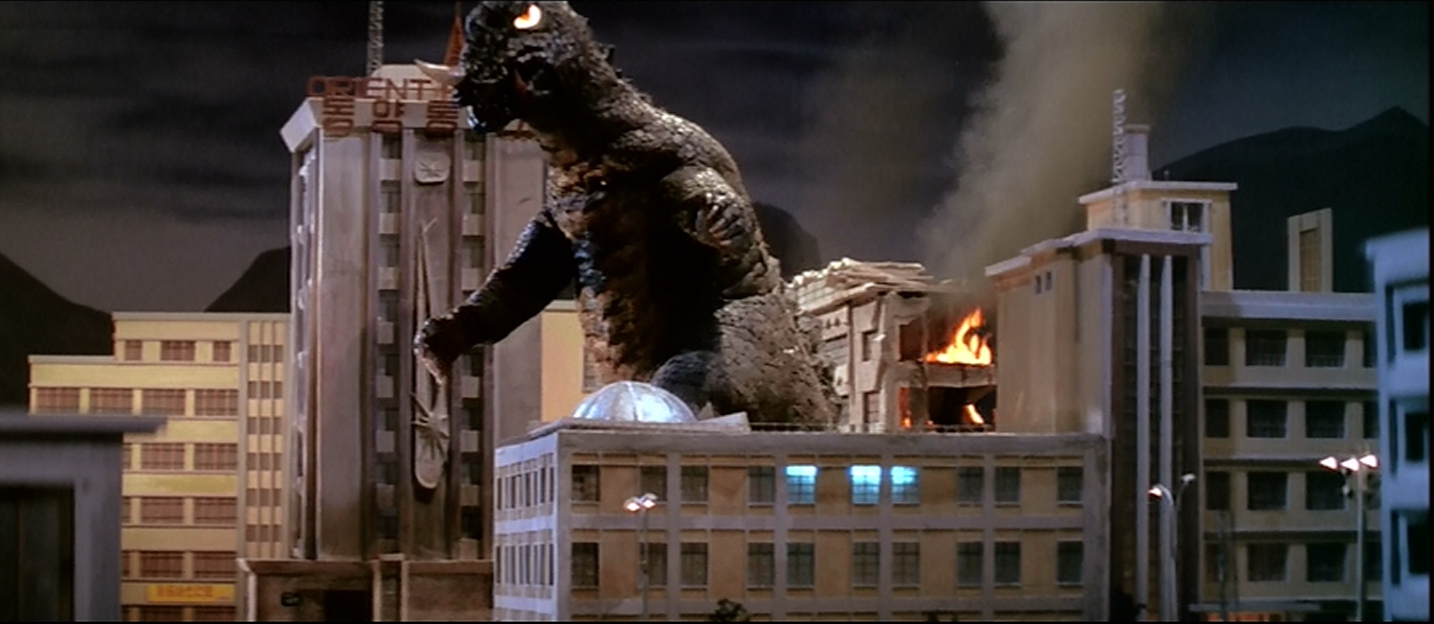
Yonggary was reimagined around the same time, and in the same spirit of Godzilla 1998. Which is to say it has almost nothing to do with the original film. A second edit was made for release to Western audiences, and the original Korean version is unavailable. We'l get to it in due time.
Next week, a monster whose name I can't pronounce, once again from a movie I haven't seen.
